
Showcase n. 175La Spola INTERVIEW Georges Papa FAIR Filo, challenging history COUNTRIES The Turkish textile Taiwan’s power CITY Happy Hour? SHOWCASE

C M Y CM MY CY CMY K


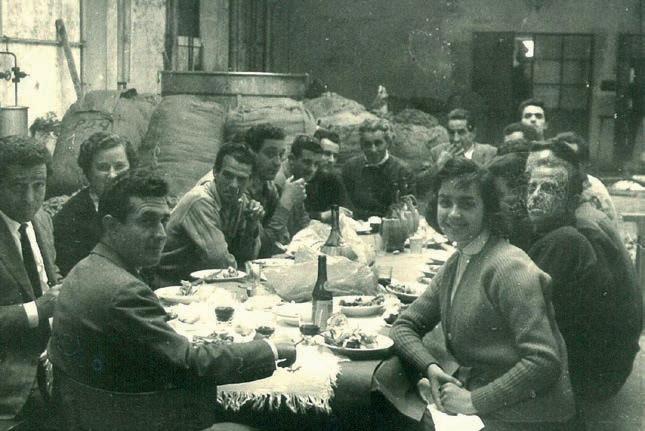
08 GEORGES PAPA
Look who's back
Ready to Show si riprende la ribalta
46 Discovering new markets
Fil-3 scopre nuovi prodotti e mercati
49 A continuous growth
Servizi e Seta investe nel futuro
50 Textile goes back to school


Tessitura Italia lancia "I campioni dell'Italia"
53 A positive show
Itema traccia il bilancio di ITMA 2023
Il tessile turco, ponte tra Occidente e Oriente
54 Fancy yarns since 1983
Filatura Alma, filati fantasia del 1983
57 An added value
Il nuovo laboratorio di Gruppo Colle
58 Tradition and innovation
Rifinizione Vignali, tradizione e innovazione
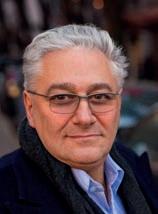
61 Sustainability and flexibility
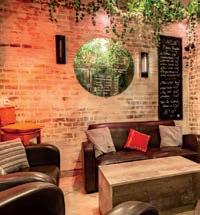
I nuovi traguardi di Epson Como Printing Tec.
62 On the customer's side
La lunga tradizione di Officine Gorgeri
City / Città
just reflected glory
2023 tra fiere e collezioni per A Zeta e Mister Joe
64 Happy hour?
Tra aperitivo e cena, dopo la fiera
registrati al portale per ricevere ogni giorno le notizie dal mondo del tessile abbigliamento

Editor in Chief Matteo Parigi Bini | Fashion EditorTeresa Favi, Marta Innocenti Ciulli | Economic Editor Matteo Grazzini
Editorial Staff Francesca Lombardi, Virginia Mammoli, Elisa Signorini | Layout Martina Alessi, Melania Branca
Translation Tessa Conticelli | Commercial Director Alex Vittorio Lana | Advertising Gianni Consorti
Publisher Alex Vittorio Lana, Matteo Parigi Bini | via Cristoforo Landino, 2 - 50129 Firenze - Italy
redazione@laspola.com

Baroni&GoriPrinting(Italy)
Questo periodico è associato alla Unione Stampa Periodica Italiana
Interviews / Interviste
Countries
/ Paesi 14 TURCHIA New horizons
Fairs
Calendario
Challenging history
con
30 ITMA, better than Barcellona Milano fa meglio del 2019
Redazionali 38 Taiwan's power Numeri e qualità del meccanotessile di Taiwan 45 Not
/ Fiere 20
or chess board? Calendario o scacchiera? 26
Filo celebra le 60 edizioni,
orgoglio
Focus /
SHOWCASE
14 8 30 64
Foto: Pitti Filati, Details of alphabet



























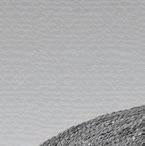









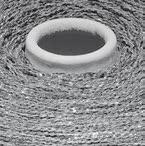
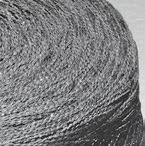






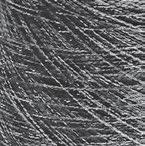

















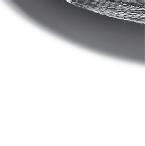











































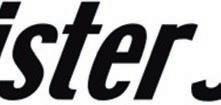







FILATI FANTASIA PER TESSITURA I MOHAIR DI MISTER JOE www.azetafilati.it | www.misterjoe.it
Goodbye September
I CALENDARI HANNO UN NUOVO VOLTO

 by Matteo Grazzini
by Matteo Grazzini
It’s hot, really hot July weather. Just before summer holidays, when Italy’s cities and factories empty out as people flock to the seaside and the mountains. This is the context in which La Spola –Showcase will be travelling, as usual, from Florence, for Pitti Filati, to Milan, with one final stop at Filo in September, the month that used to be packed with textile trade shows. In the beginning, it was Milano Unica, then came Première Vision and, eventually, Munich Fabric Start, the fair that usually opened the trade show season and now it closes it instead. A small revolution triggered by the markets, the timing of textile collections, the exhibitors’ requests and, perhaps, the need to adapt to the changing of seasons and weather conditions, which seem to have gone mad pretty much everywhere. The textile and trade show world is just back from the ITMA fair which put Milan in the spotlight for one full week, leaving behind the sound of looms, cone-winding and sewing machines and steam jets to move to the more silent spaces of Fieramilano Rho.
This La Spola – Showcase issue travels upstream along the supply chain to explore raw materials, the way they are processed and distributed. We travel as far as Istanbul, Turkey, this issue’s focus, an ever-changing country, lying at the crossroads between the Western and Eastern worlds, both a blessing and a curse for the European market. And then we go further eastwards, taking a step back to the ITMA pavilions, by telling the story of a group of companies that travelled from Taiwan to proudly showcase in Milan their country’s textile machinery products.
Last but not least, we celebrate a special anniversary, Filo’s 60th show, and, of course, we provide the usual tips to make your stay in the trade show cities more enjoyable.
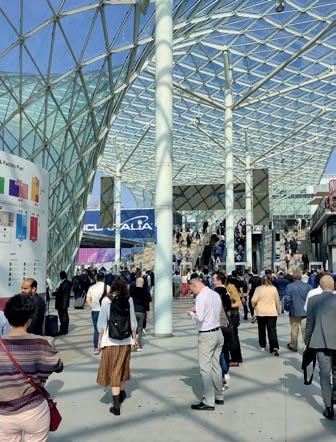
We wish you all a lovely summer!
Caldo, quello vero, di luglio. Prima delle vacanze estive, quelle che almeno in Italia fanno svuotare città e fabbriche e riempire spiagge, sentieri di montagna e autostrade. Questo è il contesto in cui La Spola – Showcase farà il suo (quasi) consueto percorso, iniziando da Firenze, con la sua Pitti Filati, e finendo a Filo, con una piccola e unica divagazione a settembre, quello che una volta era il mese per eccellenza delle fiere tessili.
In principio fu Milano Unica, poi è arrivata Première Vision e infine si è aggiunta Munich Fabric Start, che di solito apriva il calendario fieristico e che invece adesso fa da chiusura al trittico dei tessuti. Una piccoa rivoluzione dettata dai mercati, dalle tempistiche delle collezioni, dalle richieste degli espositori e, forse, anche dalla difficoltà di interpretare stagioni e meteo, che a volte sembrano impazziti.





Il mondo del tessile e delle fiere esce da una ITMA che ha acceso i riflettori su Milano per una settimana intera, lasciando al rumore dei telai, delle roccatrici, dei getti di vapore e delle macchine da cucire il predominio in spazi altrimenti più silenziosi come quelli di Fieramilano Rho.
In questo numero di La Spola – Showcase si risale la filiera e si torna a monte, andando a riscoprire le materie prime, la loro lavorazione e la distribuzione. Un tema che arriva fino in Turchia, nazione in continuo cambiamento, in perenne equilibrio tra Occidente e Oriente e stavolta anche oggetto del nostro focus, frutto di viaggi a Istanbul alla scoperta di questa realtà, croce e delizia per il mercato europeo. Ed andiamo ancora più ad Oriente, facendo un salto all’indietro tra i padiglioni di ITMA, raccontando l’esperienza milanese di un gruppo di aziende arrivate da Taiwan per mostrare on orgoglio i prodotti del meccanotessile di quel Paese.









Infine la celebrazione di un anniversario speciale, la sessantesima edizione di Filo, ed i consueti consigli per rendere più piacevole il viaggio nelle città delle fiere.
Buona estate a tutti.
EDITORIAL 7 La Spola
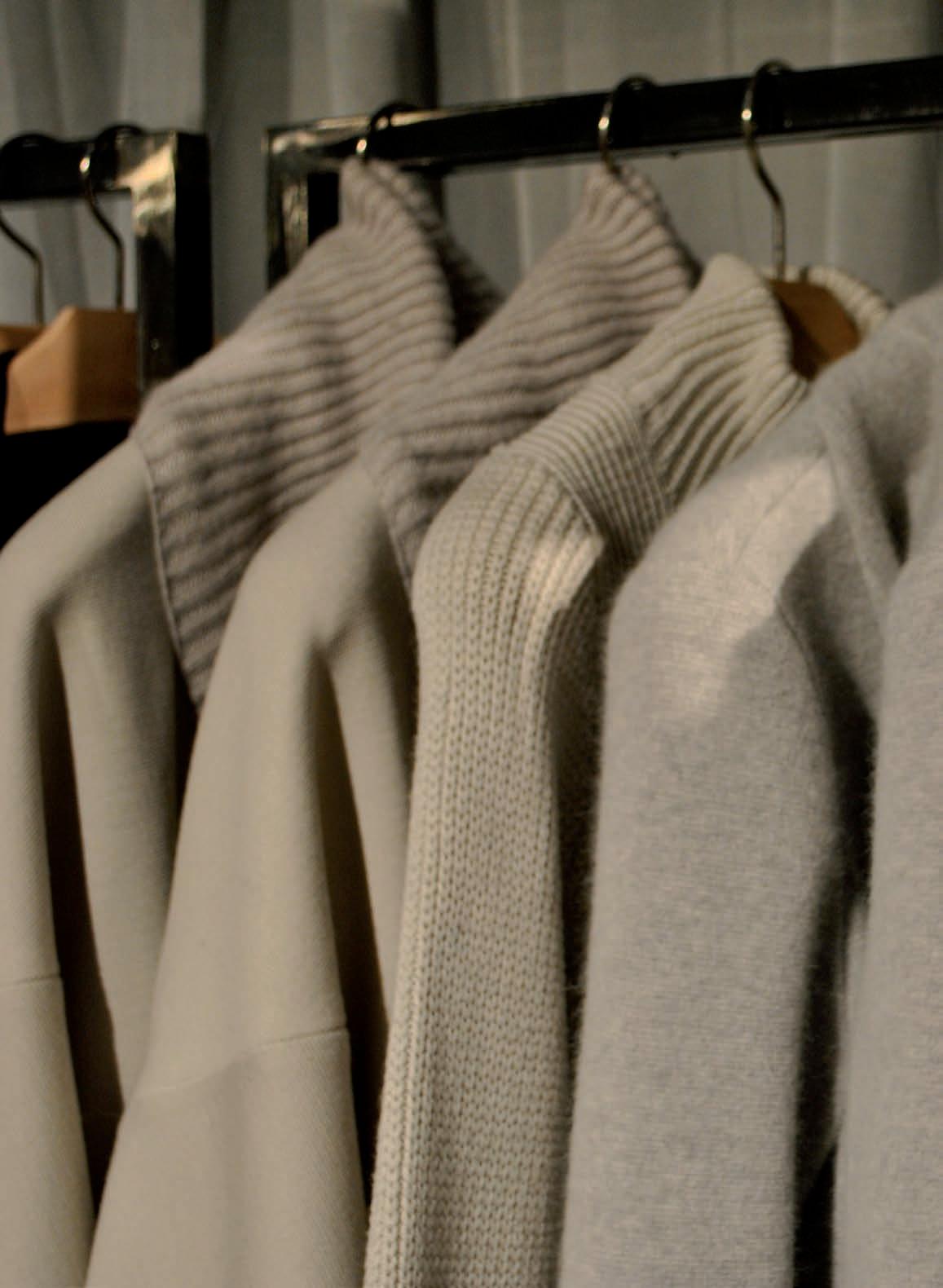
Look who’s back
READY TO SHOW SI RIPRENDE LA RIBALTA
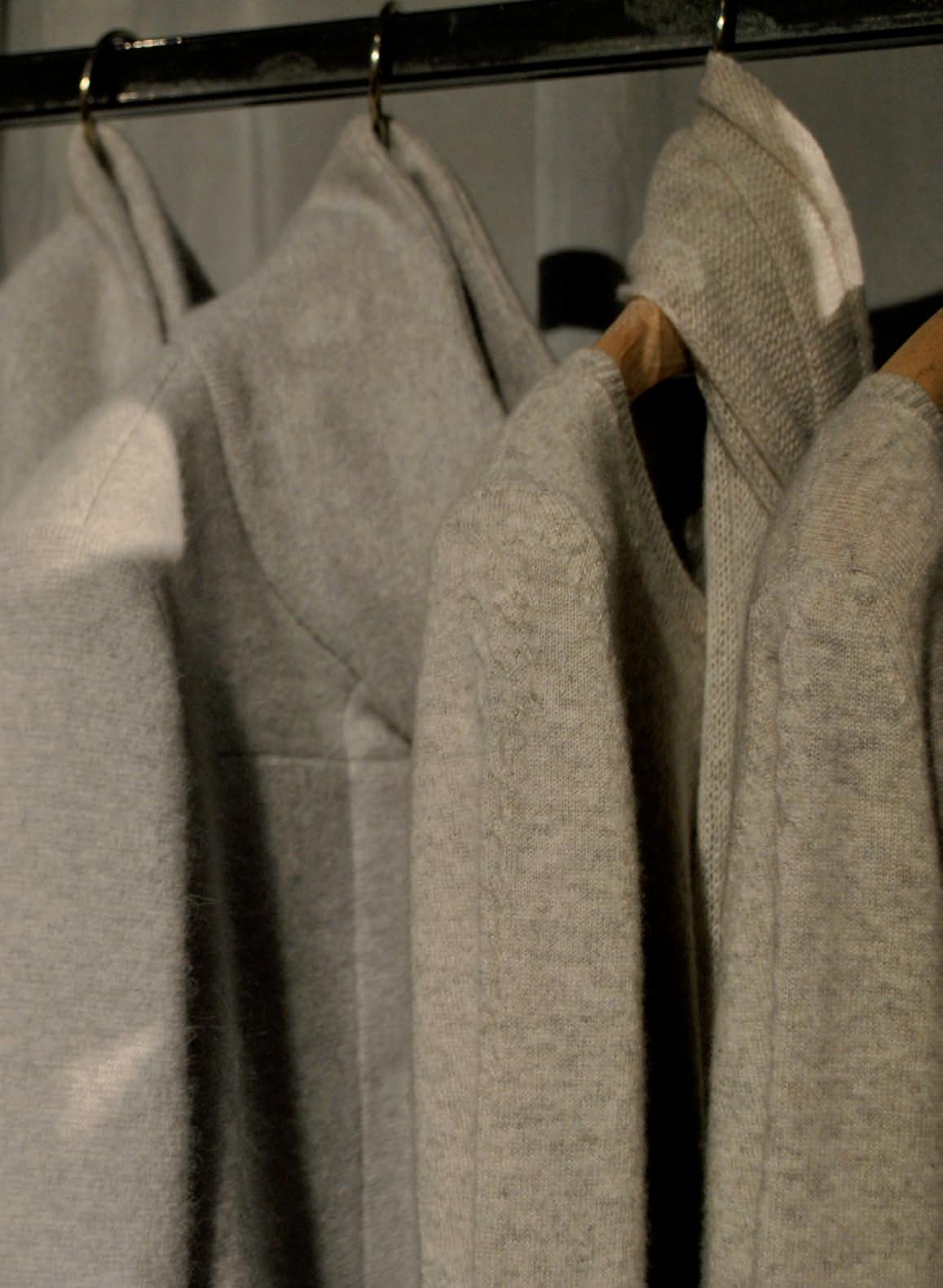 by Matteo Grazzini
by Matteo Grazzini
A life spent between Italy, France and the furthest corners of the globe; a life among fabrics, clothing, fashion and trade shows. Georges Papa, the Italian with a French accent or the Frenchman with Italian business and ideas, remains at the heart of the trade fair sector with his creation Ready to Show, a Milanese shop window for products from all over the world.
Following the pause due to Covid, the show returns in physical form from 11 to 13 July at Unahotels Expo in Milan, coinciding with Milano Unica, which is seen as an advantage: “Obviously there’s no competition”, Papa explains; “indeed, it might be considered mutually beneficial in terms of finding new visitors, customers or suppliers. Both shows have products that are not in the other.”
Over a hundred exhibitors were chosen on the basis of a series of business criteria, sales and more; manufacturers from China, Turkey, India, Egypt, Bangladesh and Pakistan, countries that already supply the Italian fashion industry, from high-end to mass retail. But there are also exhibitors from Mauritius, Kyrgyzstan, Tajikistan, Uzbekistan, Madagascar, Nepal, Romania and Moldova.
Ready to Show appears to have a new face. Is this a post-pandemic change?
Partly it is, because before the pandemic, sourcing was nearly all from China. That meant that in February 2020 I was forced to cancel that year’s Ready to Show because Covid had already arrived in China and the borders were closed, while Milano Unica and Première Vision went ahead in the normal way. So I told myself I shouldn’t be dependent on China, which remains a powerful player in the sector - and Europe’s largest supplier - but look to countries that were already strong, like Turkey, and others that were off the European radar, like Kazakhstan, India or the former Soviet republics.
Is this also a way to tell us a trade fair is always a priority?
When the pandemic came along we all turned to the internet to organise virtual shows, and we ourselves launched Ready to Show online, but the results were pretty disappointing, not only for us but for everyone. The web might work for B2C, but it doesn’t work for B2B, because it lacks the contact, the feel of a fabric or a garment, the personal relationship between supplier and customer. That’s why I also value other shows dedicated to clothing or accessories, like Momad in Madrid, or CPM in Moscow, when that was happening.
Is the format you’ve chosen the same one you used in the past, for example at Palazzo delle Stelline?
Yes, with small, functional stands. We sell services, not square metres of exhibition space. We want to offer the opportunity to
Una vita tra Italia, Francia e le zone più disparate del mondo, una francese o francese con lavoro e idee in Italia, è ancora nel cuore del
Ready to Show sembra presentarsi con un volto nuovo. E’ un cambiamento dovuto al post pandemia?
una potenza nel settore, la prima per le forniture
E’ anche un modo per far capire che il ruolo di una
Quando è arrivata la pandemia tutti ci siamo rivolti a Internet per online ma i risultati sono stati abbastanza deludenti, non solo per il
anche per esempio al Palazzo delle Stelline?
INTERVIEW 10 La Spola
"La rete può funzionare per il b2c, ma non per il b2b. Lì ci vogliono il tatto sul prodotto, le relazioni interpersonali"
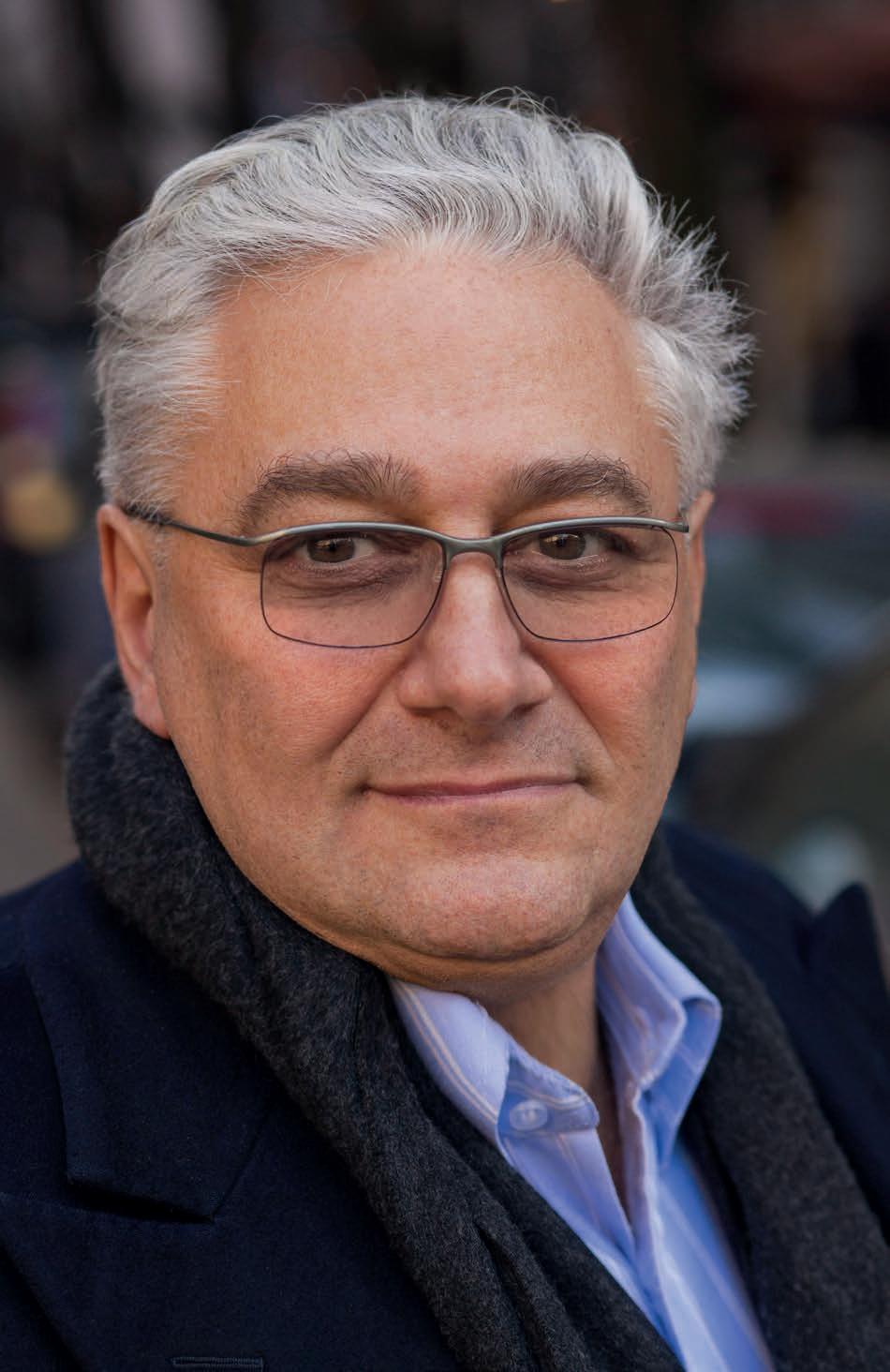
INTERVIEW 11 La
Spola
Georges Papa
interact in a concentration of hundreds of companies. There will also be a small number of textile producers, but the majority will be garment makers who bring their collections of clothing, knitwear and accessories.
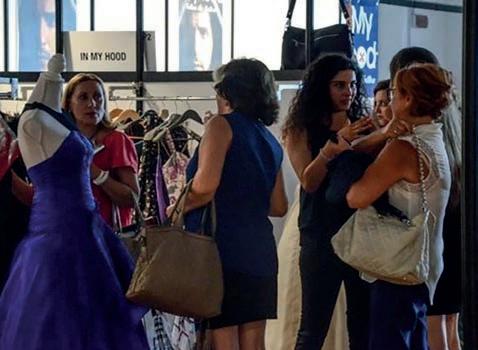

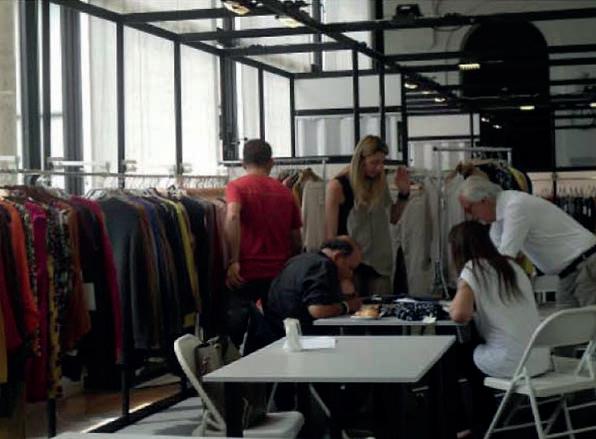
One of this year’s main innovations is the Area Italia. International buyers are increasingly seeking new Italian suppliers. These might be emerging young designers, brands that are not yet well known, new franchisers, and also Made in Italy manufacturers offering their quality and production capacity as partners for customers’ private labels. The area was created to offer professional support for this new tendency to export Italian fashion; after all, Italy is one of the few countries where it’s still possible to produce goods that are recognisable in terms of origin. Made in Italy is the dream of any young designer.
You have a global view of the textile market. Apart from Turkey, which other countries do you see emerging?
Although things are tricky at the moment, I think Egypt is the country with the most potential. But in actual fact, rather than whole countries, it’s cities that are setting the trends and showing the most attractive market indications: we can’t ignore Cairo or Istanbul, but there’s also a lot going on in Astana or Almaty, and all over northern Europe.
Northern Europe brings sustainability to mind.

Sustainability in all its forms is actually the common theme that unites exhibitors, visitors and guests: production methods and technology, in terms of managing the life cycles of products and factories from design to manufacture, advertising, sales and recycling, as well as ethical and human sustainability. And it’s important to say that sustainability should be a virtue of all, not just certain companies or certain countries; otherwise it’s useless. There should also be incentives to educate people and ensure the rules are followed.
Una delle novità principali sarà l’Area Italia.
si possa davvero realizzare una produzione riconoscibile dal punto di
Lei ha uno sguardo globale sul mondo della moda e come emergenti?
Il nord Europa richiama il concetto di sostenibilità.
INTERVIEW 12 La Spola
Alcuni scatti dalle edizioni precedenti di Ready to Show e l'Una Hotel Expo che ospita quella di luglio


New horizons
IL TESSILE TURCO, PONTE TRA OCCIDENTE E ORIENTE
by redazione La Spola

Texhibition and Istanbul Fashion Connection. Two trade shows which in recent years - at least since the pandemic - have gained visibility on the European fashion scene, offering Turkish textiles as a resource to both east and west.
Both shows, but Texhibition in particular, turn the spotlight on Turkey, a country with the perennial role of a bridge between two continents: Europe on the one side, Asia on the other, in a ceaseless alternation of priorities and interests, but also clashes and conflict. And it is indeed a conflict - between Russia and Ukraine - that gives Turkey an enhanced role as a buffer, to add to the part it played during the most desperate period of Covid.
The pandemic caused a complete interruption of European goods entering Asia, both raw materials and semi-finished or finished products. A sudden short-circuit during which Turkey acted as a lifeline to those seeking help to continue production: the country stepped in as a supplier to companies stuck without materials, and as a partner to those in need of collaboration, but it also absorbed market shares once reserved mainly for China and India.
The war in Ukraine, with its economic and political fallout, has led to other opportunities: Turkey has never closed its door to Russia. Istanbul Fashion Connection welcomed hundreds of Russian buyers; Turkish fashion actually has a broad appeal beyond the Black Sea, and even the former Soviet republics look to the Bosphorus with keen interest. All this is happening at a moment in history that is both delicate and tragic. February’s earthquake on the border between Turkey and Syria had dramatic repercussions for the entire country, but the damage was extremely serious for the Turkish textile industry, since Gaziantep is one of the main production areas.
Weaving and spinning mills and garment factories collapsed, workers and owners dead, buildings damaged and stocks to be moved: the tragedy affects manufacturers and customers alike: bear in mind that a giant like Inditex has 194 partners in Turkey; Hugo Boss has a factory employing 4000 workers; Mango has 663 workshops, 70 stores and some 1300 employees all over the country. Levi Strauss and H&M also have factories in the earthquake zone. There were cities to be rebuilt and populations to be supported, right in the middle of an election campaign in the run-up to the vote between Erdogan and Kilicdaroglu in late May.
Despite these challenging circumstances, Texhibition was ready to go: the trade fair stood out for its organisation, attendance and offer, with the entire textile industry represented, from raw materials to
Texhibition e Istanbul Fashion Connection. Sono due dei saloni che negli ultimi anni, almeno dalla pandemia in poi, hanno guadagnato visibilità nel panorama europeo proponendo il tessile turco come risorsa tanto ad ovest quanto ad est.
Le due fiere, soprattutto Texhibition, hanno acceso i riflettori su un Paese, la Turchia, in perenne ruolo di ponte tra due mondi: da una parte l’Europa e dall’altra l’Asia, in un continuo alternarsi di priorità e interessi, ma anche di scontri e conflitti. E proprio un conflitto, quello tra Russia e Ucraina, ha dato alla Turchia un ulteriore ruolo-cuscinetto, che si aggiunge a quello svolto nel periodo più acuto del Covid.
La pandemia ha infatti causato l’interruzione totale dell’approvvigionamento europeo in Asia, sia di materie prima che di semilavorati e prodotti finiti. Un corto circuito improvviso nel quale al Turchia ha saputo fare da ancora di salvezza a chi cercava aiuto nel portare avanti la produzione: si è proposta come fornitrice a chi era rimasto privo di materiale e come partner a chi ha avuto bisogno di collaborazione, ma ha anche assorbito quote di mercato una volta riservate a Cina, in maggior parte, e India.
La guerra in Ucraina, con i suoi effetti sull’economia e sulla politica, ha aperto altri scenari: la Turchia non ha mai chiuso le porte in faccia alla Russia. Istanbul Fashion Connection ha ospitato centinaia di buyers russi: la moda turca ha infatti un ampio appeal al di là del Mar Nero ed anche le ex repubbliche sovietiche guardano verso il Bosforo con grande interesse.
Tutto questo in un momento storico tanto delicato quanto tragico. Il terremoto del febbraio scorso nei territori di confine tra Turchia e Siria ha avuto risvolti drammatici per tutta la nazione ma ha danneggiato in modo molto grave proprio il tessile turco, che nella zona di Gaziantep ha uno dei principali luoghi di produzione.
Tessiture, filature e confezioni crollate, operai e imprenditori morti, immobili danneggiati e scorte da trasferire: lo scenario tragico tocca produttori e committenti, basti pensare che un colosso come Inditex ha 194 partner in Turchia, che Hugo Boss ha una fabbrica con 4.000 dipendenti, che Mango ha 663 stabilimenti, 70 negozi e circa 1300 dipendenti in tutta la Turchia. Fabbriche nelle zone colpite dal sisma anche per Levi Strauss e H&M.
Città da ricostruire e popolazioni da sostenere in piena campagna elettorale, durata fino a fine maggio per il ballottaggio tra Erdogan e Kilicdaroglu.
Nonostante questa situazione delicata Texhibition si è fatta trovare pronta: una fiera che ha brillato per organizzazione, presenze e
16 La Spola COUNTRIES
Pregi e difetti dell'industria tessile di una nazione da sempre punto di passaggio di merci, soldi e culture fra Europa e Asia


fabrics. To be clear: nowhere near the numbers seen in Paris, the customer targets in Milan or the scope of Shanghai, but a definite and precise landmark for a market of both quality and quantity. Stands were medium-sized and easy to identify, brimming with colour and variety; sustainability was evident, as Turkey is also working in that direction.
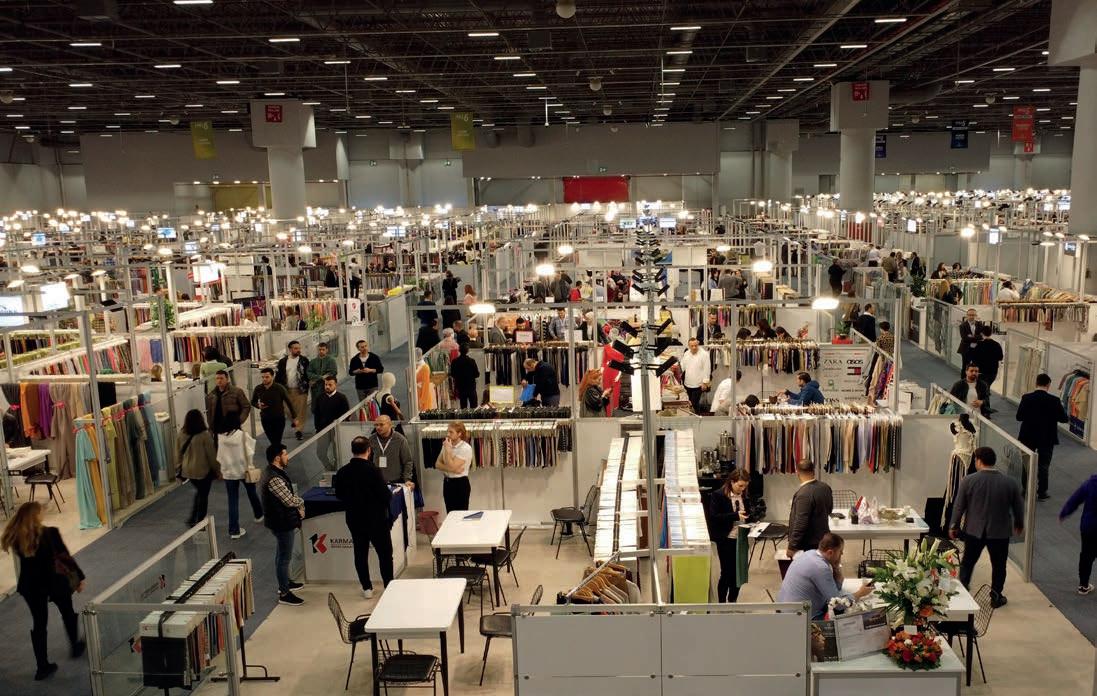
And a proud organiser - Ithib, the Istanbul Textile Exporters’ Association - well-supported by the government, whose president had no qualms about expressing his disappointment in the recent changes at Première Vision: “What they’ve decided in Paris is unacceptable”, said Ahmet Öksüz, “because we’re being hidden away in Hall 6, with the non-European countries, among the Asians, without being informed. It’s true that Turkey isn’t part of Europe, but it could be said that the United Kingdom isn’t either, yet British firms will be in Hall 5. Marginalised, that’s how we feel”.
Can Turkey be a competitor for Italy to fear? According to several Italian experts who offer technical or commercial consultancy to Turkish businesses, it seems not, or at least not yet. It’s a question of different mentalities and needs, of services not yet on a level with Italian ones, of limits to the quality of products, especially yarns, and a research sector as yet unoptimised. The industry’s strengths, right now? Good relations with Russia and state aid in both economic and lobbying terms, not to mention support for international expansion, with Turkish companies present en masse in Paris and London under institutional flags.
offerta, con tutta la filiera rappresentata, dalle materie prime al tessuto. Sia chiaro: niente a che vedere con i numeri di Parigi, il target di clientela di Milano o le dimensioni di Shanghai, ma un chiaro e preciso riferimento per un mercato sia di qualità che di quantità. Stand di media misura, ben identificabili, ricchi di colori e di varietà: il fattore sostenibilità non è in secondo piano, la Turchia sta lavorando anche in quella direzione. E poi un organizzatore fiero e ben supportato dal governo come Ithib, l’associazione degli esportatori tessili di Istanbul che non si è peritata ad esprimere il proprio disappunto per le ultime scelte di Première Vision: “E’ inaccettabile quello che hanno deciso a Parigi – ha detto Ahmet Öksüz, il presidente – perché ci emargineranno nella Hall 6, insieme alle aziende non europee, in mezzo agli asiatici, senza anticiparci niente. E’ vero che la Turchia non è in Europa, però da un certo punto di vista non lo è neppure il Regno Unito, eppure le aziende inglesi andranno nel padiglione 5. Emarginati, ecco come ci sentiamo”. La Turchia può essere una concorrente temibile per l’Italia? Secondo alcuni addetti ai lavori italiani che fanno consulenza tecnica o commerciale per alcune aziende turche pare di no, o almeno non ancora. Questione di mentalità e necessità diverse, di servizi ancora non all’altezza di quelli italiani, di limiti nella qualità dei prodotti, soprattutto per la filatura, e di una ricerca ancora da ottimizzare.
I punti di forza, al momento? I buoni rapporti con la Russia e l’aiuto dello Stato, sia in termini economici che di lobby, per non parlare del supporto per l’internazionalizzazione, con le aziende turche presenti in massa a Parigi e Londra sotto insegne istituzionali.
18 La Spola COUNTRIES
L'orgoglio dei tessitori: "Siamo emarginati da alcune scelte che ci penalizzano e non tengono conto della qualità"
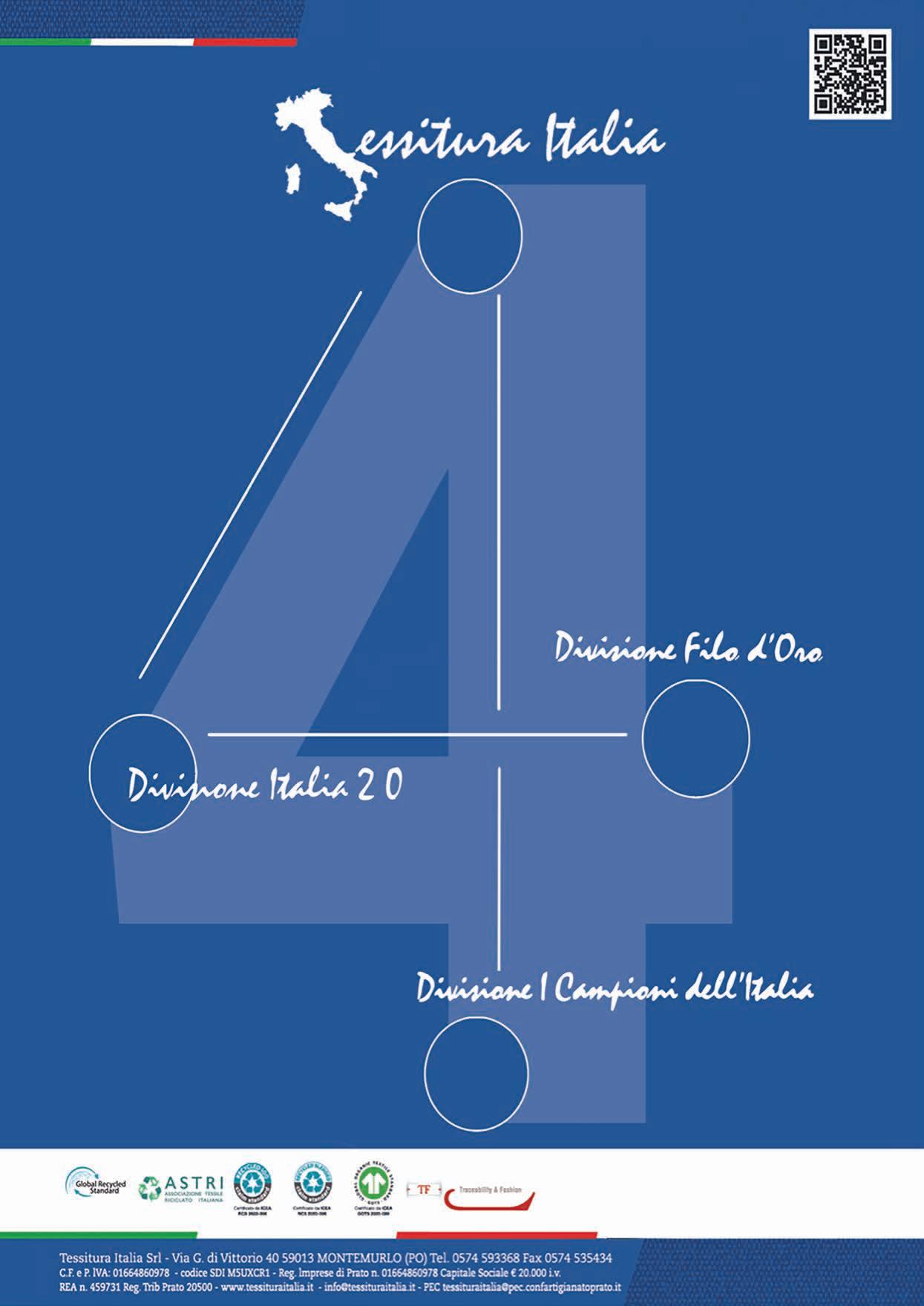

Calendar or chess board?
 by Matteo Grazzini
by Matteo Grazzini
Première
Vision (ph. Alex Gallosi)
CALENDARIO O SCACCHIERA?
Too many? Overlapping? Made obsolete by technology? Maybe, sometimes, no. Blunt answers (ours, and certainly not definitive) to blunt questions (or criticisms, if you choose to listen to some arguments) that are often to be heard in the corridors of various trade fairs and exhibitions.
The point about the excessive number of shows is one that arose shortly before the arrival of the pandemic, died down in the dark months of lockdowns and internet communication and returned as soon as the calendar once again filled with little red circles marked with the names of trade fairs: samples to be sent, suitcases to pack, sales offices emptied of staff, expenses to be afforded and results to analyse are some of the tasks discussed by entrepreneurs and exhibitors during their conversations in Milan, Paris, Florence and the headquarters of various trade associations.
However, the connection between those who are happy with the situation and those who are starting to put the brakes on remains the trade fair itself, an event that’s unmissable for nearly everyone, and has an appeal that’s completely untarnished by computer screens. There may be fewer people travelling than there used to be; fewer deals may be secured than in the good old days, but attendance at the show is a must which very few are willing to give up.
We’re writing this at a time still ringing with the echoes of ITMA, which filled the spaces of Milanofiera Rho with its magnificent, joyously noisy and colourful machinery: a ceaseless babel that has revitalised international textile technology and boosted the case of those who root for trade shows as essential events for doing business.
So let’s see how the boxes on the calendar are used as a chess board on which we place the pieces, i.e. the shows. The opening of the summer season is split between London and Florence. On 27 and 28 June, TexPremium at the Lindley Hall showcases the best of European textile manufacturing: selected companies for a selected market, in the wake of a strategy that’s successfully used, for instance, by Blossom in Paris.
This overlaps by a day - 28 June - with Pitti Filati: held at Fortezza da Basso in Florence over three days, the yarn collections for fall/winter 2024-25 are presented by 120 brands, and celebrated in the new research space Domino, curated as ever by Angelo Figus and Nicola Miller, which embodies the concept of Pitti Games, the main theme of this summer’s Pitti Immagine shows.
July brings the first appointment in Paris, in the broadest sense of the word, because although Première Vision (4-6 July) remains loyal to the Parc des Expositions, Texworld Evolution
Troppe? Sovrapposte? Superate dalla tecnologia? Forse, talvolta, no. Risposte secche (nostre e di certo non assolute) a domande secche (o critiche, se si preferisce dare ascolto a qualche polemica) che negli ultimi tempi si sentono spesso nei corridoi dei vari saloni.
Quella del numero eccessivo di saloni è una questione iniziata un po’ prima dell’arrivo della pandemia, rimasta sopita nei mesi bui del lockdown e dei collegamenti via Internet e ripresa subito non appena il calendario è tornato a riempirsi
discussioni a Milano, Parigi, Firenze e nelle sedi delle varie associazioni.
un luogo che per quasi tutti è imperdibile e con un fascino che
Magari la trasferta viene fatta in numeri più esigui rispetto al passato, magari si chiudono meno ordini che nei tempi belli a rinunciare.
Questo in un momento in cui è ancora viva l’eco di ITMA,
ternazionale e ha dato ulteriore sostegno a chi “tifa” per le
E allora vediamo come le caselle del calendario sono state usate come una scacchiera sulla quale posizionare le pedine, Londra e Firenze si dividono l’apertura della stagione estiva. Il 27 ed il 28 giugno Texpremium va in scena alla The Lindley Hall per dare risalto al meglio della produzione tessulla scia di una strategia usata, ad esempio, da Blossom a Parigi.
Ricerca, Domino, curato come in ogni edizione da Angelo Figus e Nicola Miller, declinazione del concetto di Pitti Games,
A luglio il primo appuntamento è a Parigi, nel senso più este-
fedele agli spazi del Parc des Expositions c’è una Texworld
FAIRS 22 La Spola
-
-
-
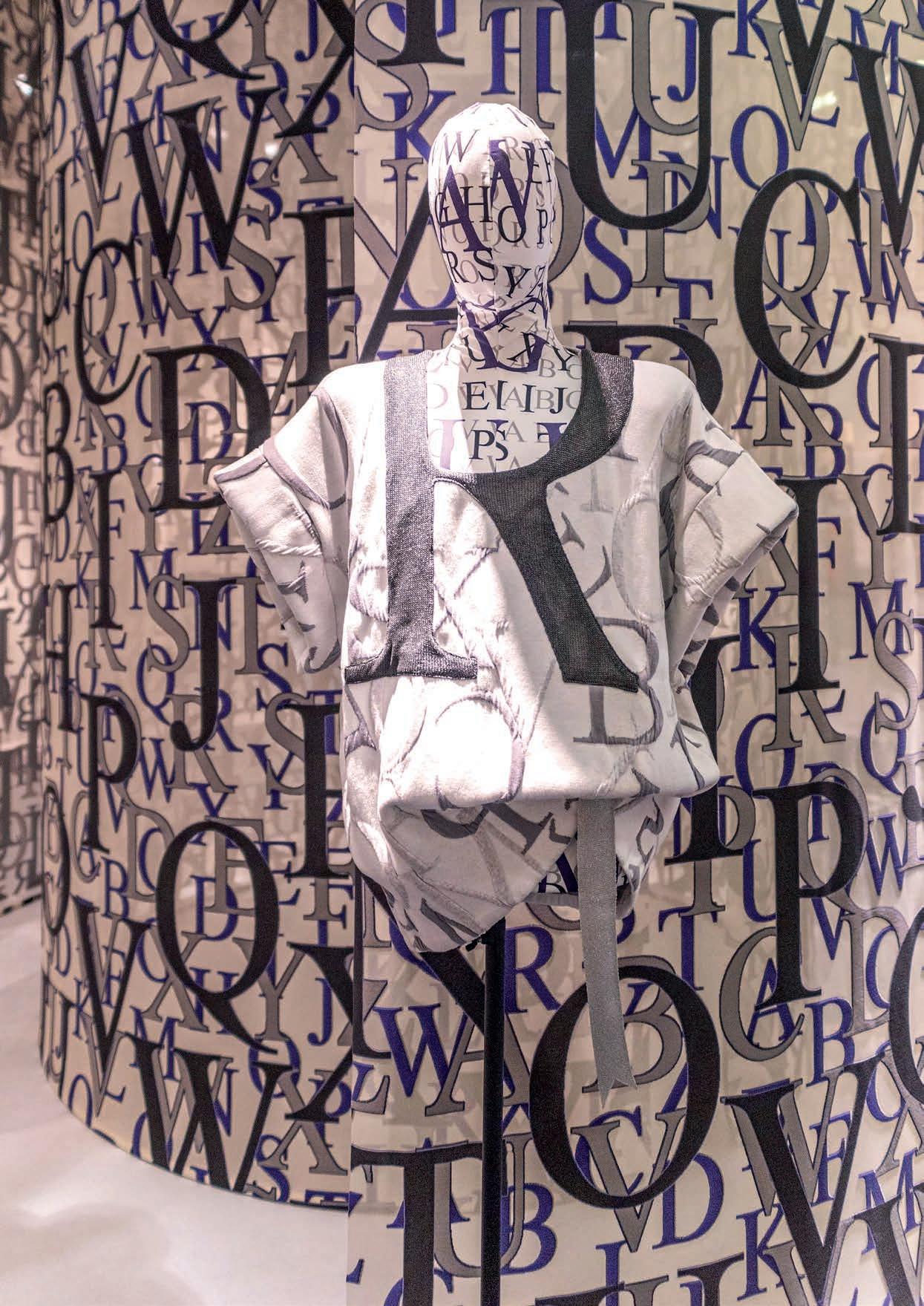 Pitti Filati
Pitti Filati
(3-5 July) is moving to Porte de Versailles on the northern edge of the city (Le Bourget), where it will run concurrently (in part; for two days) with Curve and Interfilière, the trade fairs for lingerie, loungewear, swimwear and activewear. A comprehensive offer that will bring thousands of visitors to the exhibition venue nearest to the city centre.
Première Vision itself is something of a litmus test following its July “debut” last year, and seeks confirmation of the decision to bring it forward from the usual September date: we already know the new features of the show, from the division of pavilions by nationality to the reopening of Hall 3 for leather, the green sticker for virtuous producers and the expansion of services on offer to exhibitors and visitors.
There’s unavoidable news too for Milano Unica (11-13 July), which for this edition only moves to Pavilions 1, 2, 3 and 4 of Rho due to the redevelopment work scheduled after ITMA: the formula is a tried and tested one that has brought excellent results for many years. Towards the end of the month, there’s another change of date in Germany: Munich Fabric Start (1820 July, with Bluezone, Keyhouse and The Source) is another trade show awaiting confirmation and response from a market - German - that has yet to react fully to the economic difficulties caused by Covid and the war in Ukraine.
After a quiet August on the show scene, the calendar once again fills with the “new faces” of international business: the London Textile Fair (4-5 September), Texhibition (13-15 September) and Modtissimo (13-14 September) will turn the spotlights on the UK, Turkey and Portugal.
The curtain falls with the 60th edition of Filo (20-21 September), but we’ll talk about that another page.
Bourget) a Porte de Versailles, dove troverà una concomitanzadicati a lingerie, loungewear, swimwear e activewear. Un’offerta totale che porterà al centro espositivo più vicino al centro della città migliaia di persone.


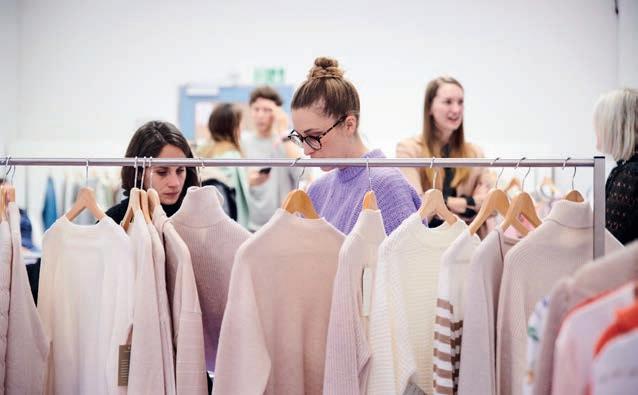

Première Vision, dal canto suo, è alla prova del nove dopo il “debutto” a luglio di un anno fa e cerca conferme alla
vità sono già state anticipate, dalla divisione dei padiglioni in base alle nazionalità, la riapertura della Hall 3 per la pelle, il bollino verde per le aziende virtuose e l’allargamento dei Novità, forzate, anche per Milano Unica (11-13 luglio) che a causa di lavori di ristrutturazione programmati nel post frutti in tutti questi anni. Chiusura di mese, altra novità, con Bluezone, Keyhouse e The Source) è un altro salone che aspetta conferme e risposte da un mercato, quello tedesco, che Covid e guerra in Ucraina.
Dopo l’agosto riservato alle ferie il calendario si animerà di ma di questo parliamo in un capitolo a parte.
FAIRS 24 La Spola
Milano Unica
Interfiliere
Munich Fabric Start
Modtissimo
-
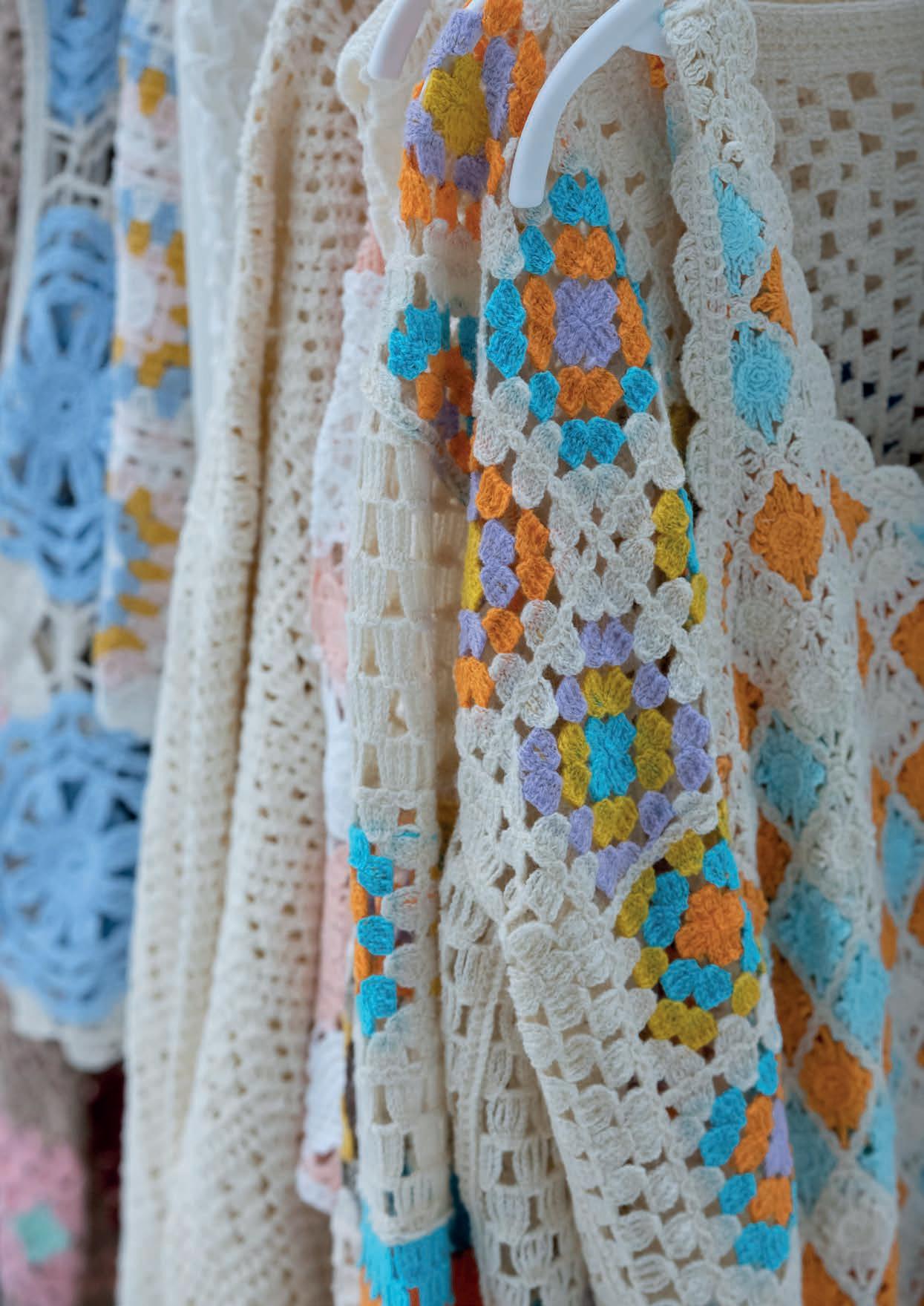
Texworld Evolution Paris
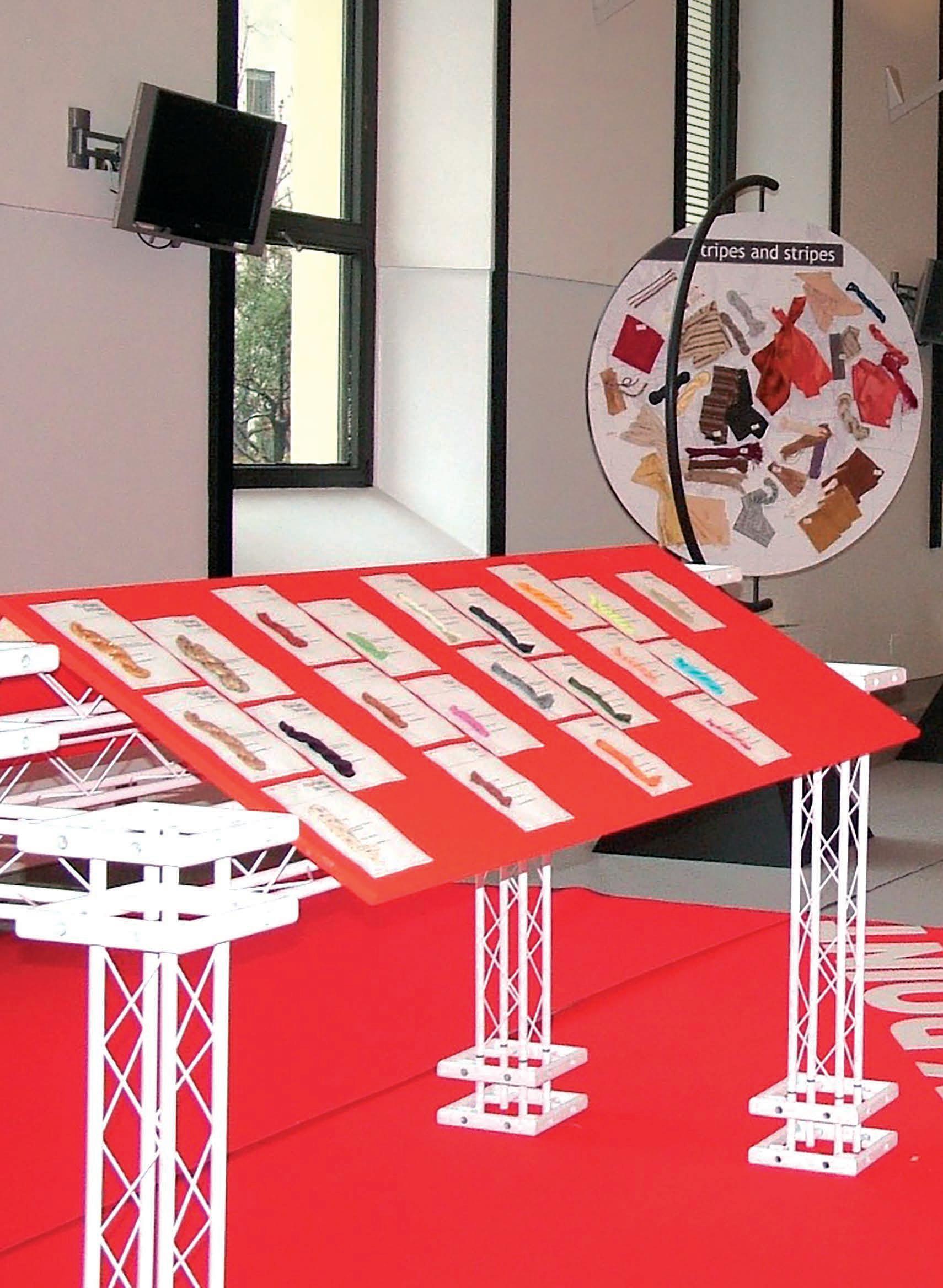
Challenging history
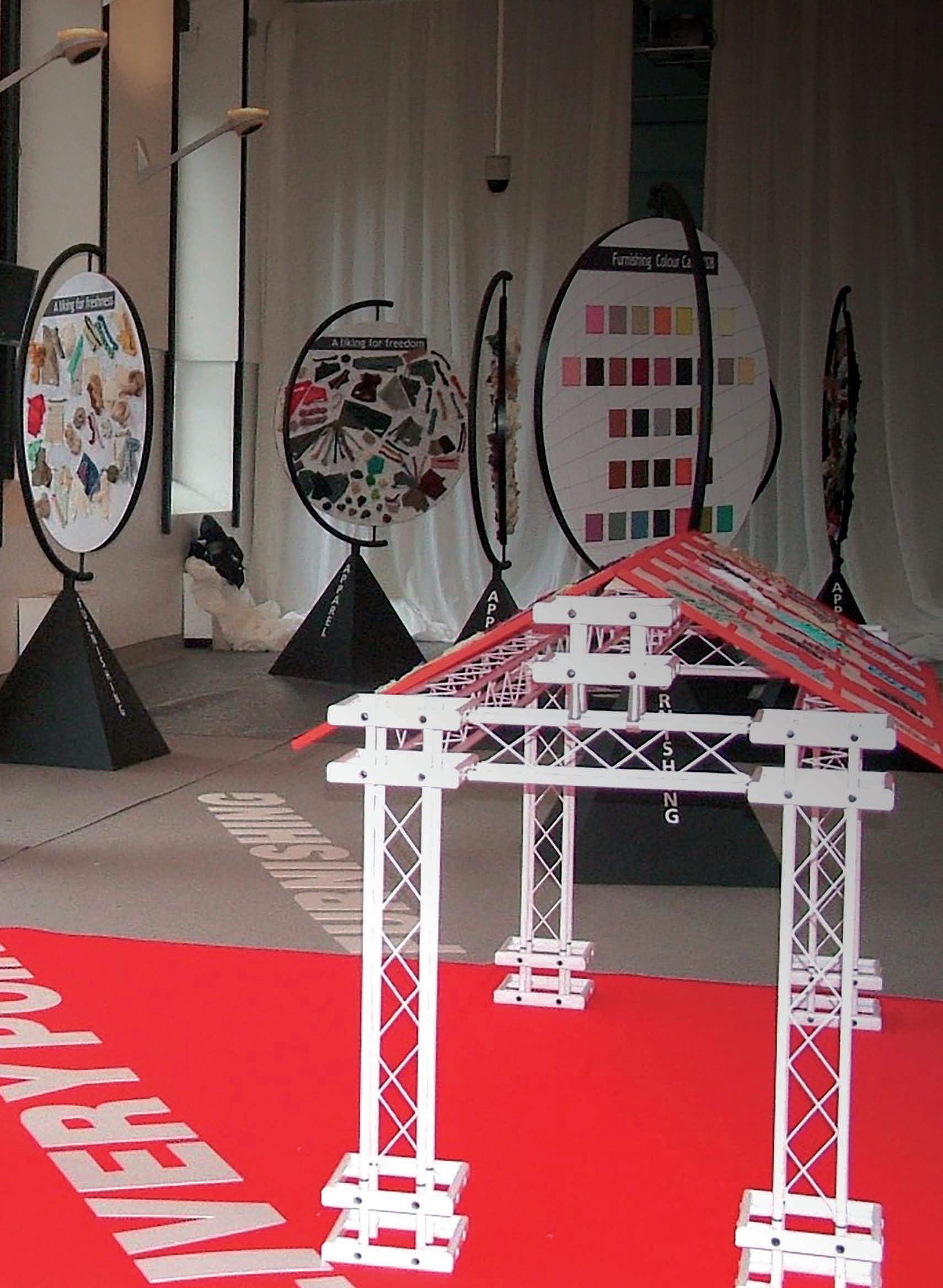
FILO CELEBRA LE 60 EDIZIONI, CON ORGOGLIO
L'area tendenze di Filo nel 2006
by Matteo Grazzini
30 years, at today’s pace, with the current technology, needs and markets, make an era. And during this era, companies, ideas, plans, dreams and illusions have come and gone.
Among those who survived, by adapting to the changes, innovating, fighting tooth and nail sometimes and, sometimes, enjoying an easy landing, there is Filo which, in September, will be celebrating its 60th show. A long journey, shared with the textile spinning companies that led the Milanese trade show (now) to experience a second or even a third youth and to cross the bridge between two centuries.
Many stops, in terms of locations, along the way: Palazzo delle Stelline in Milan, at Cernobbio’s Villa Erba on Lake Como, and then back to Milan at Superstudio on Via Tortona which was, however, far from today’s glitz and glamour, and, eventually, at Palazzo delle Stelline again before the current MiCo location.
“MiCo is the feather in our cap- the trade show manager Paolo Monfermoso says- the place where we feel good and where we can offer visitors facilities, connections and services. But our previous locations were lovely too”. Monfermoso takes stock of thirty years of a trade show that was able to reinvent itself:” Some Biella-based spinning companies came up with the idea of creating a weaving yarn show and, as the markets changed, we changed and increased our offerings too”.
The journey was shared with a lot of people. Is there someone you remember in particular?
By drawing a list, I would certainly forget someone, so I would just like to mention Gianni Bologna who has been with us from the very start, passionately and enthusiastically. Without him and his stylistic ideas for yarns, we would have never gone so far. Generally speaking, I would like to thank those who have always been by our side by trusting us, thus, the companies, and those who worked for us and with us, that is, the whole Filo staff, and also the press that followed us. Any unforgettable moments in thirty years’ time?
There are the good memories of the textile industry’s golden years and the bad memories, those of downturns in the markets. We recently experienced the impact of Covid, but in the sense that the trade show was strengthened in those hard times because, when we introduced remote online communication, we realized that a lot of people felt close to us, for many of them saw us as, if not a family, at least as a solid team. Those images conveyed the feeling of very good interpersonal relationships. It was also very
30 anni, con i ritmi, le tecnologie, le necessità e i mercati di oggi, sono un'era. Ed in questa era sono nate e morte realtà imprenditoriali, idee, progetti, sogni e illusioni.
Tra chi è sopravvissuto, adattandosi, innovandosi, lottando a volte con i denti ed altre volte godendosi un felice volo planare, c'è Filo, che a settembre festeggerà le 60 edizioni.
ha portato il salone milanese (adesso) a vivere una seconda o magari anche una terza giovinezza e ad attraversare il ponte tra due secoli.
Tante, dal punto di vista delle location, le tappe di questo percorso: Palazzo delle Stelline a Milano, poi la puntata sulle rive del lago di Como a Villa Erba di Cernobbio, il ritorno in città al Superstudio di via Tortona, che però era ancora un po' lontano dai fasti e dalle luci mondane di adesso, quindi di nuovo le Stelline prima della sistemazione attuale al MiCo.
proprie bomboniere”.
E' proprio Paolo Monfermoso a fare un bilancio dei trenta anni di un salone che ha saputo in parte reinventarsi:
mento dei mercati abbiamo anche noi cambiato e ampliato
E' stato un cammino fatto con tante persone. Chi ricorda in modo particolare?
Facendo una lista dimenticherei certamente qualcuno quindi mi limito a citare Gianni Bologna, che è con noi dal primo giorno con passione ed entusiasmo. Senza di lui e senza le
dove siamo adesso. Nel complesso dobbiamo ringraziare chi
ed anche la stampa che ci ha seguiti. Momenti indelebili in trenta anni?
Ci sono i ricordi belli degli anni d'oro del tessile ed anche
zamento del salone in quel duro momento, perché nacquero i video delle interviste a distanza e capimmo che in tanti ci stavano vicini, anche perché ormai c'è chi considera Filo se non una sorta di famiglia sicuramente un bel gruppo. Quelle immagini comunicavano anche un rapporto interpersonale ben avviato. Importante è stato anche l'inizio della
FAIRS 28 La Spola
-
-
-
important to start collaborating with Milano Unica. One of the biggest changes was the trade show’s schedule. You’re basically the only show taking place in September.

In the beginning, we were scheduled for mid-October and mid-March, but we had to adapt to the changes made by others over the years, because of the exhibitors’ and customers’ needs and the increasingly fast-paced markets. On one side, we were careful not to overlap with other events and, on the other, we were ready to go on collaborating with other shows, such as Milano Unica where, as usual, we will be showing our sustainable yarn products and the presentation video of our Bologna offerings.
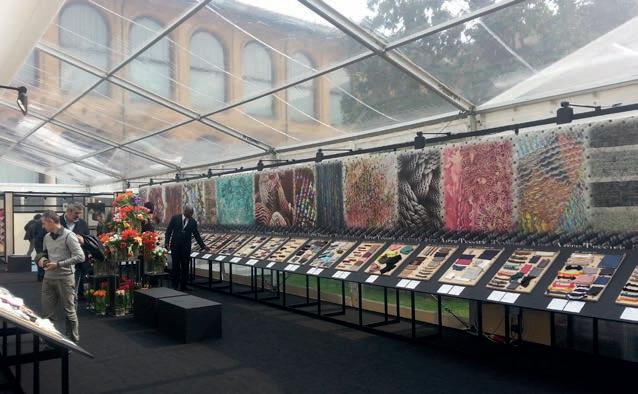
Any special celebrations coming up?
We have plans and we will definitely celebrate by seizing the opportunities offered by MiCo. We will start with an opening ceremony on September 20, at 10,30 am.

collaborazione con Milano Unica.
Uno dei cambiamenti maggiori è stato quello dei calendari. A settembre sarete quasi l'unico salone in agenda.
Quando iniziammo eravamo in programma a metà ottobre e a metà marzo ma ci siamo dovuti adattare alle scelte fatte da altri in questi anni, a loro volta quasi obbligati da espositori, clienti e mercati sempre più frenetici. Siamo stati attenti da un lato a non sovrapporci ad altri eventi e dall'altro ad essere pronti per proseguire le collaborazioni come quella con Milano Unica, dove saremo come sempre
presentazione delle proposte di Bologna.
Ci dobbiamo attendere una qualche celebrazione particolare?
Ci stiamo pensando e sicuramente faremo qualcosa sfrut-
con una cerimonia inaugurale il 20 settembre alle 10,30.

FAIRS 29 La Spola
Paolo Monfermoso
Filo al Palazzo delle Stelline
Filo 2013
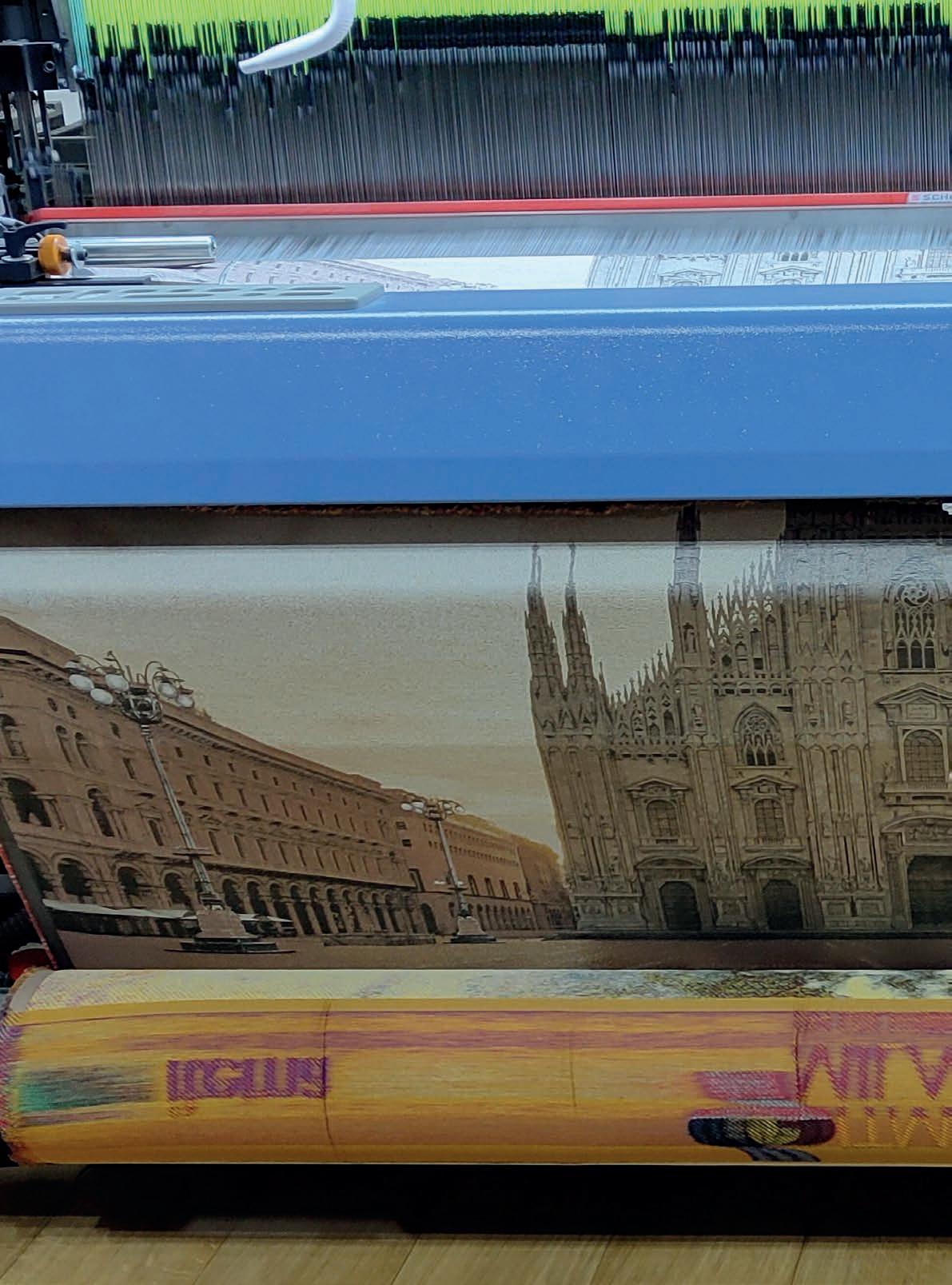
ITMA, better than Barcellona
by Matteo Grazzini

MILANO FA MEGLIO DEL 2019 CON 111.000 VISITATORI
L'omaggio di Itema a Milano
The anticipation was almost spasmodic: an entire global industry waiting for the show to put pandemics, sales declines and doubts about the future behind it. And ITMA did not betray these expectations, with a Milan edition full of insights and, it seems, good business as well.At the time of going to press with this issue of Showcase come the first official responses, which speak of satisfaction among exhibitors and organizers.
Ernesto Maurer, President of Cematex said: “This edition has been a great success with the visitorship higher than the previous exhibition in 2019. At this ITMA, the transformation journey toward digitalisation and sustainability has taken a huge leap forward. It has been a mega gathering with the presence of stakeholders of the entire textile and garment making ecosystem. Cematex associations and their member companies, as well as all other exhibitors, are delighted with the results as the exhibition has surpassed all our expectations.”
Federico Pellegata, director of Acimit, noted: "The results of Milan edition confirmed ITMA as the most important showcase for world textile machinery industry. It was a great success, judging from the quality of visitors in attendance, and many Italian exhibitors have secured contracts and sold their machines".
"We met customers who already had an idea of what they were looking for," say Debora and Raffaella Carabelli in the Fadis booth, where the duty of work goes hand in hand with the pleasure of a gastronomic corner renowned in every edition of the fair, "while in the last edition in Barcelona you could also meet people who had come out of simple curiosity. We came from a really good 2022, while 2023 started more slowly, partly because everyone was waiting for ITMA; in any case we had orders until October even before we came to Milan, where we presented the first spooling machine robot in a booth with as many as fifteen machines on display. We saw customers from the big groups and obviously missed some customers from the East and Eastern Europe. Humanly it is a great sorrow but the effects of the war affect us little, except for the stop in Ukraine, a market that was growing."
The 19th edition of the world’s largest textile and garment technology exhibition also drew the participation of several delegations and supporting organisation groups. Among many officials and government representatives, ITMA 2023 hosted high-level country delegations from two of the major textile producing countries, India and Uzbekistan.
The delegation from the 6th largest cotton producer in the world was led by President Shavkat Mirziyoyev of Uzbekistan, who declared his strong intentions to boost the textile industry in his country.
FAIRS 32 La Spola
L'attesa era quasi spasmodica: un intero settore mondiale che aspet-
-
Al momento di andare in stampa con questo numero di Showcase
-
importante vetrina per l'industria meccanotessile mondiale. È stato e molti espositori italiani hanno ottenuto contratti e venduto le loro macchine".
ed ovviamente sono mancati alcuni clienti dall'Oriente e dall'est Eu-
-
stava crescendo".
-
suo Paese.

India was represented by Smt. Darshana Vikram Jardosh, Minister of State (Textiles and Railways) of India who led the Confederation of Indian Textile Industry (CITI) business delegation. The delegation comprised 39 top Indian textile and apparel CEOs keened to seize new opportunities by riding on the digitalisation and sustainability wave.
Italy, for its part, played the part of hostess with great effectiveness: Acimit saw the work of years come to fruition, the last act as president of Alessandro Zucchi, who is preparing to leave the leadership of the association after completing his second term. The Italian association of textile machinery manufacturers inaugurated during the first day of the show an exhibition tracing the history of the sector, from its beginnings to the present day: historical photographs, videos and large panels inside "Casa Italia," which for seven days was the focal point for exhibitors and talian guests.


Elegance and green textiles in the evening at Villa Necchi Campiglio, for the occasion open in all its rooms thanks to the availability of the FAI: among more informal chats, international journalists and a few toasts Acimit awarded the two companies most virtuous in reducing carbon dioxide (Carbon Footprint) in the production process. Francesca Fani, of Pafa of Prato, and Greta Banfi of Brazzoli of Lombardy, received the Green Label Award to the applause of their colleagues.Once the curtain came down, it is already time to think about 2027: ITMA will return to Germany, after the not-so-recent experience in Munich. An unusual venue that will force the mechanical-textile industry to make some extra logistical efforts. That's four years away, but for a trade show like this, time is never too much.

FAIRS 34 La Spola
--
-
nari tessili ha inaugurato durante il primo giorno di salone una mo-
-
ed ospiti taliani.
duttivo.
-
colleghi.

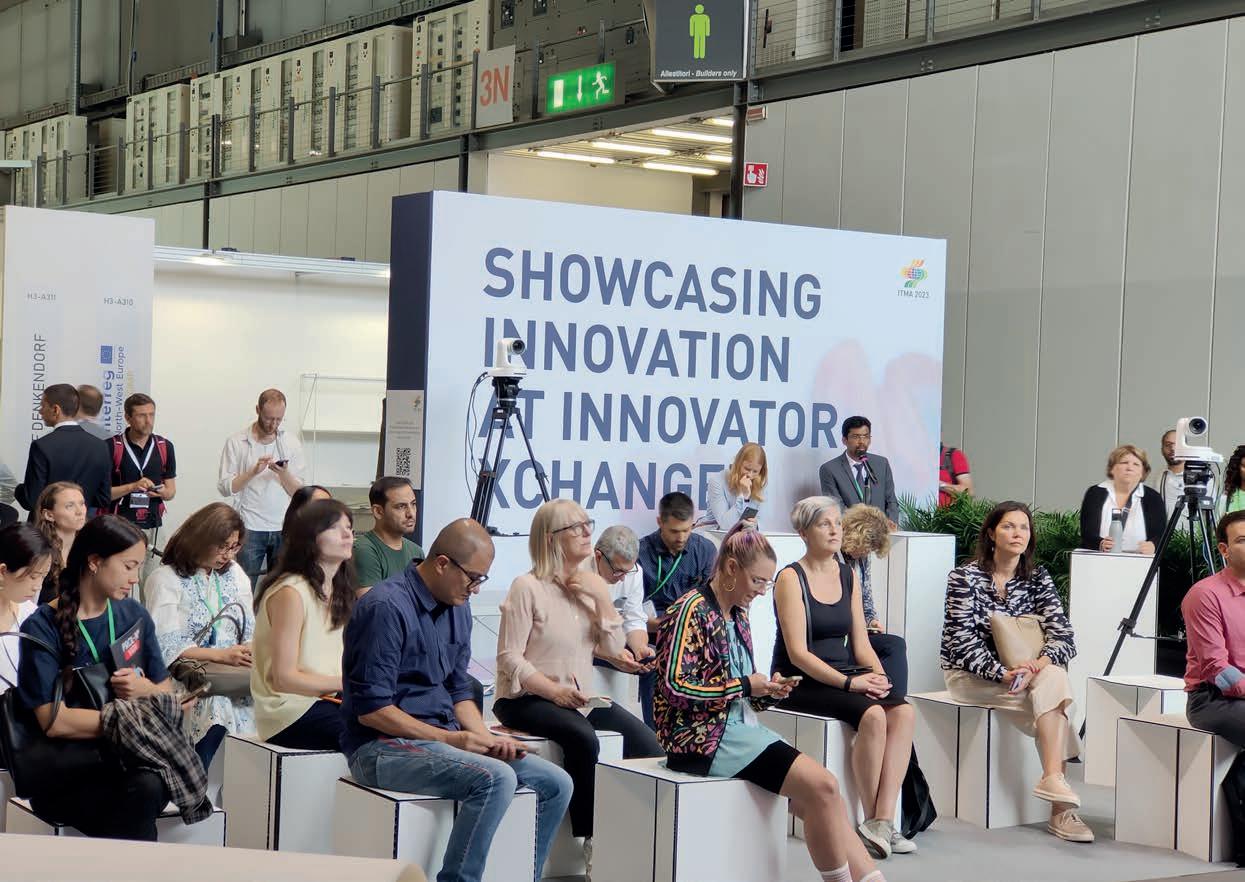



Taiwan's power
NUMERI E QUALITÀ DEL MECCANOTESSILE DI TAIWAN
by La Spola
Some 40 companies including machinery manufacturers and services, a propensity for internationalization supported by an entire nation, and numbers that make the island one of the most influential representatives of the world's mechanotextile industry-Taiwan came to ITMA strong with all this and earned the limelight at the Milan show. High-quality, technologically advanced and reliable equipment is on display at Fieramilano Rho testifying to Taiwan's long history of mechano-textiles and the wide range of products that are made in that part of East Asia.
Knitting machines, weaving machines, dyeing and finishing equipment, spinning machines and more arrived in Italy for the showcase offered by ITMA: engineers, entrepreneurs, technicians and sales employees united under the nation's flag and looking for additional market in Europe.
We present some of them with a review of interviews conducted at the trade show: a more in-depth look at one of the most important sectors of Taiwan's economy at a particular time in history, with the pandemic behind us, ITMA in the present and the trade shows in Asia in the future. (ad by BOFT)
Charming Star, between tradition and innovation
With the rising awareness of the earth’s environmental protection, CMS Textile Machinery has introduced the concept of energy saving, carbon reduction and environmental protection, and most of the mechanical equipment has been upgraded to fully computer-controlled machines, in addition to reducing the demand for electricity, improving work efficiency, and assisting the intelligent operation of the textile industry, it will continue the vitality of the textile business field.
Charming-star, in addition to continuously shining and heating
Una quarantina di aziende tra produttori di macchinari e servizi, una propensione all'internazionalizzazione sostenuta da un'intera nazione e numeri che fanno dell'isola una delle più autorevoli rappresentanti del meccanotessile mondiale: Taiwan si è presentata a ITMA forte di tutto questo e si è guadagnata la ribalta del salone di Milano.
Attrezzature di alta qualità, tecnologicamente avanzate e affidabili, in mostra a Fieramilano Rho a testimoniare la lunga storia del meccanotessile di Taiwan e la vasta gamma di prodotti che vengono realizzati in quella parte dell'est asiatico. Macchine per maglieria, per tessitura, attrezzature per la tintura e il finissaggio, macchine per la filatura e altro ancora arrivate in Italia per la vetrina offerta da ITMA: ingegneri, imprenditori, tecnici e impiegati commerciali uniti sotto la bandiera della nazione e alla ricerca di ulteriore mercato in Europa. Ne presentiamo alcune con una rassegna di interviste effettuate in fiera: uno sguardo più approfondito su uno dei settori più importanti dell'economia di Taiwan in un momento storico particolare, con la pandemia alle spalle, ITMA nel presente e le fiere in Asia nel futuro. (ad by BOFT)
Charming Star, un lungo ponte tra tradizione e innovazione
Con la crescente consapevolezza della protezione dell’ambiente CMS Textile Machinery ha introdotto nel mercato del meccanotessile il concetto di risparmio energetico e della riduzione delle emissioni di carbonio, aggiornando la maggior parte delle attrezzature meccaniche con macchine completamente controllate da computer, riducendo la domanda di elettricità, migliorando l’efficienza del lavoro e assicurando il funzionamento intelli -

FOCUS 38 La Spola
in the Covering Machine and twisting machine equipment, and the development of Textile Sample Machines, provides various fancy and functional yarns . It also actively invests in research and design for the processing and transformation of raw materials, proactively providing customers with Small Sample Machines and exchanging design inspirations, transforming passivity into proactivity to increase product exposure.
Furthermore, various precision winding machine and fancy twisting machines are incorporated to enhance the activation of yarns, thereby implementing the concept of environmental protection. Simultaneously, they also develop equipment and provide Whole Plant idea to meet customized demands, offering integrated services.

Which are the novelties presented at ITMA?
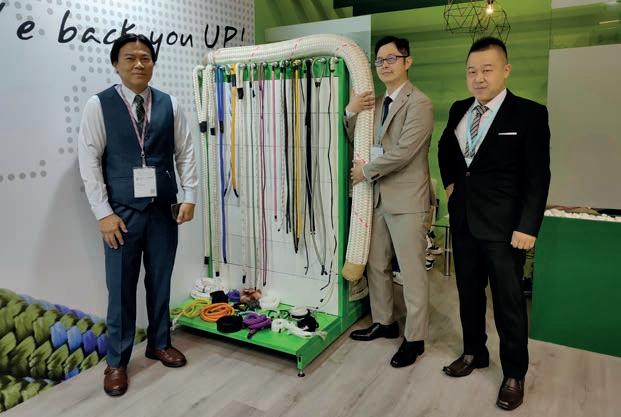

The servo drive system increases the working efficiency and reduce the motor power.
What differences do you notice between European and Asian markets?
The gap on the labor cost in the world is getting smaller. Although, due to the higher technical knowledge history in Europe existed much longer as well as the higher labor cost, the European market demand more advanced machine.
How did you manage the difficult period of the pandemic?
Maintain the good attitude and do the good job of internal rectification. Strengthen research and development, enhance the after-sales service to make the best support to all customers.
How you deal with the environmental sustainability?
Using energy-saving facilities, developing the products with energy-saving and carbon reduction.

gente dell’industria tessile.
Charming Star è specializzata in attrezzature per le macchine di ritorcitura e per macchinari per campioni tessili, ma fornisce anche vari filati di fantasia e funzionali. Ha investito nella ricerca e nella progettazione per la lavorazione e la trasformazione delle materie prime, fornendo ai clienti piccole macchine campione.
In campionario anche varie macchine per la roccatura di precisione e macchine per la torsione di fantasia per migliorare i filati.
Quali sono le novità presentate a ITMA?
Un sistema di servoazionamento che aumenta l’efficienza di lavoro e riduce la potenza del motore.
Che differenze notate tra i mercati europei e quelli asiatici?
Il divario del costo della manodopera nel mondo si sta riducendo. Anche se, a causa delle conoscenze tecniche più elevate che esistono da molto più tempo in Europa e del costo del lavoro più elevato, il mercato europeo richiede macchine più avanzate. Come avete gestito il difficile periodo della pandemia?
Mantenendo un atteggiamento positivo e facendo un proficuo lavoro di aggiustamenti interni. Abbiamo rafforzato la ricerca e lo sviluppo e migliorato il servizio post-vendita per offrire il miglior supporto possibile a tutti i clienti.
Come affrontate il tema della sostenibilità ambientale?
Utilizzando strutture a risparmio energetico, sviluppando prodotti nella stessa ottica e riducendo le emissioni di anidride carbonica.
FOCUS 39 La Spola
Pailung
Charming Star
Logic Art
Hsiang Chuan
Hsiang Chuan, with pride
HC (Hsiang Chuan) is an expertise braiding machine manufacturer, for over 40 years. By experienced team in manufacturing and designing over the years, HC has had more than 400 models of braiders.
The experienced R&D team is capable of machines’ customization. A variety of patents by innovating designs also makes HC become one of the leading braiding machine manufacturers. HC sales team offers complete after-sales service for many and various customers. Maintaining Asia customer base and actively expanding our market in other countries are always the company’s target. HC insists manufacturing base is only in Taiwan because “Made in Taiwan” matters to those knows the difference between their machines and those “Made in China”.
HC products find application in the areas of textile cords, isolating sleeves, sports and safety, tubes and hoses, stainless steel hoses, coaxial caves and wires, solid braider, twisted cords and bobbin winder. To showcase the quality of the product HC chose a rope bracelet made in the colors of Ukraine as a sign of solidarity with those affected by the war. The market for this company, which employs about 80 people among its various locations, is practically global: in Europe it has customers in, among others, Germany, the Czech Republic and the Netherlands, but it does not lack an outlet in the United States.
Which are the novelties presented at ITMA?
The two braided bracelets as a giveaway for visitors at ITMA, made by our new machines.
What differences do you notice between the European and Asian markets?
Many European users try to pursue a user friendly as their goal over purchase price.
How did you manage the difficult period of the pandemic?
Orders from various industries have supported us.
How do you deal with the sustainability issue?
To reduce e-waste on machines. We reduce the electronic component, and thus its waste, using classic machinery.
Will you participate in the next edition of Itma Asia?
If companies of MIT cannot be distinguished with particular sign/mark, then ITMA Asia will be pretty much like ITMA Shanghai.
Logic Art, solutions for the future
Logic Art comes to ITMA with a ‘reputation’ as an expert in LA-Total solutions for smart manufacturing and the world’s largest manufacturer of ODM dispenser equipment since 1993. The company has long been dedicated to integrating factory automation, shifting the models of traditional industries towards smart manufacturing.
Hsiang Chuan, con orgoglio Hsiang Chuan è un’azienda produttrice di intrecciatrici da oltre 40 anni. Grazie a un team esperto nella produzione e nella progettazione, nel corso degli anni HC ha prodotto più di 400 modelli di macchine tutte personalizzabili. Il team di vendita offre un servizio completo di assistenza post-vendita a molti clienti in tutti i continenti. Il mantenimento della base dei clienti in Asia e l’espansione in altri paesi sono da sempre l’obiettivo dell’azienda.
HC insiste sul fatto che la base di produzione è solo a Taiwan, perché il “Made in Taiwan” è importante per chi conosce la differenza tra le sue macchine e quelle “Made in China”.
I prodotti trovano applicazione nei settori delle corde tessili, dei manicotti isolanti, dello sport e della sicurezza, dei tubi e delle manichette, dei tubi in acciaio inox, dei cavi e dei fili coassiali, delle trecce solide, delle corde ritorte e delle bobinatrici.
Il mercato di questa azienda, che hacirca 80 dipendenti tra le varie sedi, è praticamente globale: in Europa ha clienti in, tra gli altri, Germania, Repubblica Ceca e Olanda, ma non manca uno sbocco negli Stati Uniti.
Quali sono le novità presentate a ITMA?
I due braccialetti intrecciati in omaggio ai visitatori sono realizzati con le nostre nuove macchine. Quali differenze notate tra il mercato europeo e quello asiatico?
Molti utenti europei cercano di privilegiare la facilità d’uso rispetto al prezzo d’acquisto.
Come avete gestito il difficile periodo della pandemia?
Gli ordini provenienti da diversi settori industriali ci hanno sostenuto.
Come affrontate il problema della sostenibilità ambientale?
Riducendo i rifiuti elettronici sulle macchine, usando macchinari classici, con dotazioni base, per realizzare i nostri prodotti. Parteciperete alla prossima edizione di ITMA Asia?
Se le aziende del Made In Taiwan non possono essere distinte con un segno o un marchio particolare, allora ITMA Asia sarà più o meno un'ITMA Shanghai.
Logic Art, soluzioni per il futuro
Logic Art è arrivata a ITMA con la “fama” di esperto di soluzioni LA-Total per la produzione intelligente e di più grande produttore mondiale di apparecchiature ODM per dispenser, sin dal 1993. L’azienda si dedica da tempo all’integrazione dell’automazione di fabbrica, spostando i modelli delle industrie tradizionali verso una produzione smart. La missione di
FOCUS 40 La Spola
Logic Art’s mission is to assist the textile dyeing industry in making the smartest and most efficient production decisions, while maintaining customer-oriented innovation, service and quality, and customer trust and respect as core values.
The booth at ITMA features large displays on which all the data analyzed in real time on the operation of production systems scrolls. Steven Shen, managing director of Logic Art, explains and narrates them with friendliness and professionalism.
Which are the novelties presented at ITMA?
The major focus of our stand will be LA–IDCC (Intelligent Data Control Center) designed to collect and display all critical information to allow greater management and control the dye house. What differences do you notice between European and Asian markets?
Dye houses worldwide are looking for optimum efficiency, cost saving, waste reduction and for a lower carbon footprint. At the moment, Asia is the most important market for us because our main customers are in China, Bangladesh, Vietnam and Indonesia, and we plan to open the next office in India. In Europe, on the other hand, we meet the big sportswear brands like adidas, Nike, and Under Harmour.
How did you manage the difficult period of the pandemic?
Through our local support offices and remote diagnostics programs, we were able to provide real time support for all our customers.
How do you deal with the environmental sustainability issue?
Sustainability is a major consideration of any new product development. Our latest developments are deigned to reduce water usage and waste treatment.
Will you be attending the next edition of ITMA Asia?
Yes. If here in Milan we have a 60-square-meter booth in Shanghai we will have one of 160.
Knitwear and Pailung, an inseparable pair
Pailung is a leading global supplier of textile machinery and solutions with a rich history and solid reputation. It specialises in the design and manufacture of advanced knitting and textile machinery for a wide range of applications.
In addition to research and development services, there has been the recent addition of the Open Innovation Lab, which studies a new dynamic method of manufacturing knitting machines, including tailor-made ones for brands, designers and textile manufacturers in the fashion, furniture, healthcare and environmental textile sectors.
What innovations were presented at ITMA?
We participated with the theme 'Knit Beyond Boundaries' and the latest machines with Advanced Technology: circular knit-
Logic Art è assistere l’industria della tintura tessile nel prendere le decisioni di produzione più smart ed efficienti, mantenendo come valori fondamentali l’innovazione orientata al cliente, il servizio e la qualità e la fiducia ed il rispetto dei clienti. Quali sono le novità presentate a ITMA?
Il punto focale è la LA-IDCC (Intelligent Data Control Center), progettata per raccogliere e visualizzare tutte le informazioni critiche per consentire una maggiore gestione e controllo della tintoria.
Che differenze notate tra i mercati europei e quelli asiatici?
Le tintorie di tutto il mondo sono alla ricerca di un’efficienza ottimale, di un risparmio sui costi, di una riduzione degli scarti e di una minore impronta di carbonio. Al momento è quello asiatico il mercato per noi più importante perchè i principali clienti sono in Cina, Bangladesh, Vietnam e Indonesia e contiamo di aprire il prossimo ufficio in India. In Europa invece incontriamo i grandi brand dello sportswear come adidas, Nike e Under Harmour.
Come avete gestito il difficile periodo della pandemia?
Grazie ai nostri uffici di assistenza locali e ai programmi di diagnostica in remoto siamo stati in grado di fornire assistenza in tempo reale a tutti i nostri clienti.
Come affrontate la questione della sostenibilità ambientale?
La sostenibilità è un aspetto fondamentale per lo sviluppo di qualsiasi nuovo prodotto. I nostri ultimi sviluppi sono progettati per ridurre l’uso dell’acqua e il trattamento dei rifiuti. Parteciperete alla prossima edizione di ITMA Asia?
A Milano abbiamo avuto uno stand di 60 metri quadrati, a Shanghai ne avremo uno di 160.
Maglieria e Pailung, un binomio inscindibile Pailung è un fornitore leader a livello mondiale di macchinari e soluzioni tessili con una ricca storia e una solida reputazione.
E’ specializzata nella progettazione e nella produzione di macchine per maglieria e macchinari tessili avanzati per un’ampia gamma di applicazioni.
Oltre ai servizi di ricerca e sviluppo, c’è stata la recente aggiunta dell’Open Innovation Lab che studia un nuovo metodo dinamico di costruzione di macchine per maglieria, anche su misura per marchi, designer e produttori tessili nei settori della moda, dell'arredamento, della sanità e del tessile ambientale. Quali sono le novità presentate a ITMA?
Abbiamo partecipato con il tema “Knit Beyond Boundaries” e le più recenti macchine con la tecnologia Advanced Technology:
FOCUS 41 La Spola
ting machines to improve productivity and efficiency, computer controls, cameras, automation and digital interfaces. Not only the new Alterknits, but also high-speed, high-quality jacquard machines with 4-way stretch.
What differences do you notice between the European and Asian markets?
For the last 30 years, the knitwear industry in Europe has been the main market, but now 75 per cent of the market is in Asia, where the focus is more on fast fashion, with a greater emphasis on quick responses to market demands. And the European knitwear market is saturated, with relatively stable demand and established brand loyalty.
How did you manage the difficult period of the pandemic?
By ensuring the safety of employees: Pailung prioritised the health and safety of its employees, with more remote working, social distancing measures within the workplace. And we remained in close communication with customers.
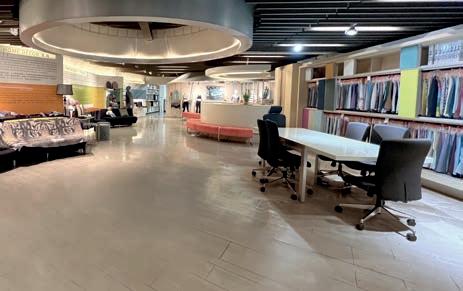

How do you address the issue of enviromental sustainability?
Although the energy and water resources used in the knitting phase are the scarcest in the entire clothing industry, we still want to contribute to sustainable production, with more efficient machines, and reduced consumption and pollution.
Will you participate in the next edition of ITMA Asia?

For the first time in many years - we will not be at the Shanghai show, but we will be at the Singapore show in 2025. We are not going to China to protect our products and copyright protection.
macchine per maglieria circolare per migliorare produttività e efficienza, controlli computerizzati, telecamere, automazione e interfacce digitali. Non solo le Alterknit, ma anche macchine jacquard ad alta velocità e di alta qualità con stretch a 4 vie. Che differenze notate tra i mercati europei e quelli asiatici?
Negli ultimi 30 anni l’industria della maglieria in Europa è stata il mercato principale, ma ora il 75% del mercato è in Asia, dove l’attenzione si concentra maggiormente sul fast fashion, con una maggiore enfasi su risposte rapide alle richieste del mercato. Ed il mercato europeo della maglieria è saturo, con una domanda relativamente stabile e una consolidata fedeltà ai marchi.
Come avete gestito il periodo della pandemia?
Garantendo la sicurezza dei dipendenti: Pailung ha dato priorità alla salute e alla sicurezza dei propri dipendenti, con più lavoro a distanza, misure di allontanamento sociale all’interno del luogo di lavoro. E siamo rimasti in stretta comunicazione con i clienti.
Come affrontate il tema della sostenibilità?
Sebbene le risorse energetiche e idriche utilizzate nella fase di maglieria siano le più scarse dell’intero settore dell’abbigliamento, vogliamo comunque contribuire alla produzione sostenibile, con macchine più efficienti, e riduzione di consumi e inquinamento.
Parteciperete alla prossima ITMA Asia?
Per la prima volta dopo tanti anni – non saremo alla fiera di Shanghai, mentre saremo presenti a quella di Singapore nel 2025. Non andiamo in Cina per proteggere i nostri prodotti e tutelare il copyright.

FOCUS 42 La Spola
Pailung
Charming Star
Hsiang Chuan
Logic Art
MILANO UNICA
11.12.13 luglio 2023 a Rho Fiera Milano
Collezioni tessili e accessori per abbigliamento
Autunno/Inverno 2024/25
milanounica.it


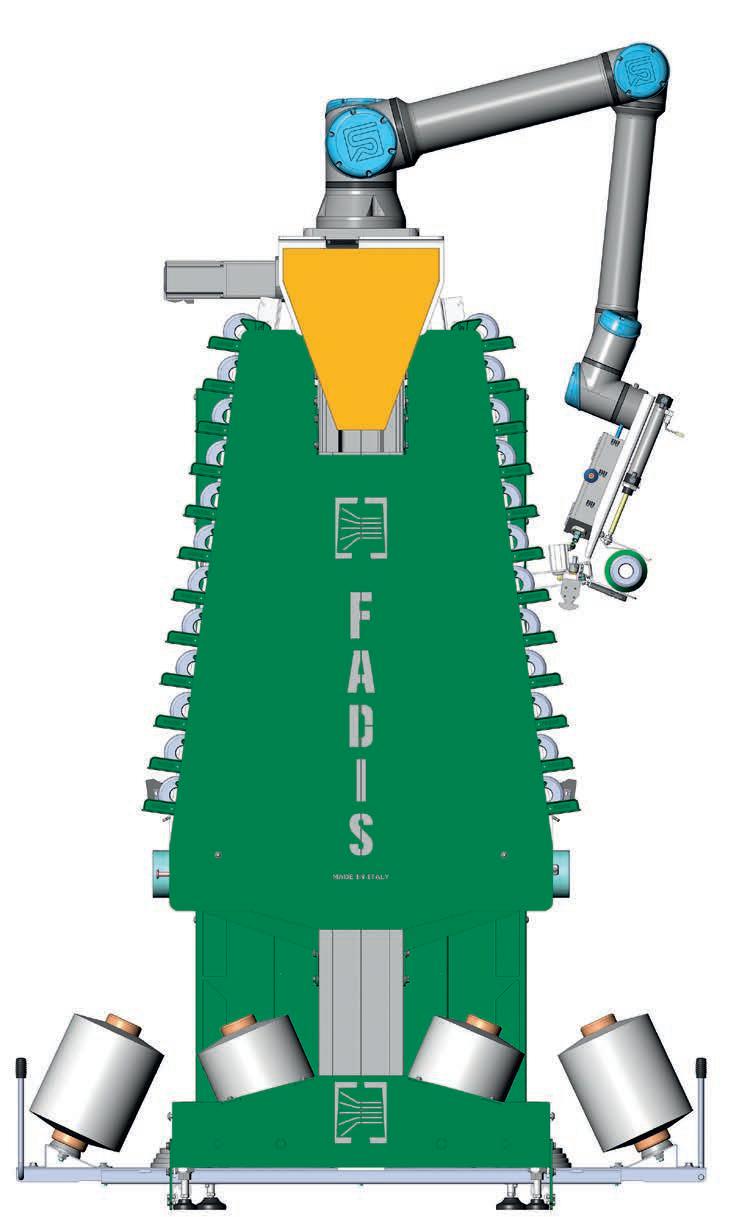
per BINARE ROCCARE INCANNARE IN AUTONOMIA E CON QUALITA’ H.24 FADIS S.p.A. - ITALY - Via Colombera 70, 21048, Solbiate Arno (VA), Italy - tel: +39 0331 989533 - fax: +39 0331 989532 - email: sales@fadis.it - website: www.fadis.it il cobot al tuo servizio NOVITA’ MONDIALE LEO ROBOT
Not just reflected glory
An objective set at the beginning of the year and carried on according to a well-defined program with precise ideas of what needed to be done: the relaunch of Vison, the company acquired by A Zeta at the beginning of the year, continues and the reorganisation plans have already started to bear fruit. A sort of complete renovation of a business historically active in this region, achieved by introducing more effective and productive working methods. A focus on business development following the expansion of factories and spaces with the enlargement of the group’s main plant in Vaiano, now practically completed. This is a further step forward for A Zeta in 2023, a year which is only partly basking in reflected glory after the excellent 2022, but which has made it possible for the company to introduce again new collections in the market: along with Mister Joe, the latest products are ready to be showcased at the summer fair.
At Pitti Filati, there will be Mister Joe with the Autumn/ Winter 24/25 collection of knitting yarns: space will be given also to the certifications, to show the group’s commitment to sustainability. RAF, GRS and GOTS are the standards which identify the products of Mister Joe which is also present in all products sold under the Feel the Yarn brand. Success for A Zeta and its products for weaving and furnishing textiles at the Filo trade fair where the focus on seasonality is less marked. Also in this case RAF, GRS and GOTS are part of the “pedigree” of their yarns, with the addition of the FSC standards and the membership of the Detox Consortium.

FOCUS 45 La Spola
Un cammino intrapreso ad inizio anno e proseguito secondo
2023 TRA FIERE E COLLEZIONI PER A ZETA E MISTER JOE
Discovering new markets
FIL-3 SCOPRE NUOVI PRODOTTI E MERCATI
After the pandemic, which interrupted a moment of great growth in the Italian spinning industry, companies have regained production and numbers, and they have entered 2023 with the positive boost brought by the markets, but also by going through the ''new'' difficulties created by the cost of energy and the war in Ukraine.
Fil-3 has chosen the path of research, investment and quality to enter this new phase of the market, and has expanded the offerings in their collections with worsted hollow-spindle yarns, or fancy yarns, which have always been the strong point of the Montemurlo based company.

Another addition to the production of worsted and carded yarns is the manufacture of classic worsted and linen yarns. For this purpose, Fil-3 is now equipped with a ring machine for the production of worsted yearns and two hollow spindle machines for the fancy yarns.
''We have invested to meet orders for this type of product,'' says Giacinto Gelli, the company's CEO, ‘' and if we see that this decision has been correct, then we are ready to invest again. We have also noticed that there is a demand from the furniture market, not only from northern Europe as usual, but also from Italy, so we want to take this type of customer into consideration, as we have always done. The type of yarn we offer is suitable for sofas covered with patterned fabrics but also for curtains or accessories, such as cushions’'.
Even with the biannual event, Filo, on the horizon, in the recent past there has also been the experience at the 19th edition of the Istanbul Yarn Fair. ‘'The Turkish market,'' Gelli concludes, ‘'is not an easy market and some products are difficult to sell, but there is the possibility of opening a way towards companies that no longer want to work with the low quality domestic production, and instead divert important orders to Europe. We have taken some orders and can work on a number of basic products for a midrange segment that is looking for quality and reliability''.
46 La Spola
Dopo la pandemia, che ha interrotto un momento di grande crescita


A continuous growth
SERVIZI E SETA INVESTE NEL FUTURO
The company arrives in Florence for the new edition of the Pitti Immagine Filati trade fair. In the last years, it has experienced dramatic growth: from 2018 to 2022, Servizi e Seta increased the turnover from 11 to 22 million euros with the objective to reach 25 million by 2023. A rapid growth which guarantees an excellent financial condition while the company has been able to maintain a balance between the three reference markets: textiles, jerseys and knitwear.
“This makes us able to deal with the risk of changes in the market”, says Alberto Enoch, CEO of Servizi e seta, “and to leave open the possibility of expanding the manufacturing sector, which covers about 10 percent of our production”.
Along with the growth, the company has also made major investments to achieve an important objective: take back part of the production processes entrusted to subcontractors or carried out abroad. This choice was also related to the need to continue providing extremely high standards of service for customers of high end and luxury items. The investment already made amounts to one million and 300,000 euros with the plan to transform and redevelop Research and Development during the course of 2024, adding an extra touch of creativity and imagination to the various collections.
Changes and development for a company which is constantly evolving for product quality and turnover in this industry and which will be present at the Filo trade fair with a summer collection rich in colour and characterised by a soft hand-feel fabric, slightly wrinkled but always smooth and never too dry: The elasticity of the fabrics will be a characteristic of the yarns developed with the new types of crêpe used both for classic silk, glossy and opaque, and for blended fabrics such as silk and cotton, cotton and silk, and linen. The patterns chosen are always very sophisticated and never too obvious, to create fabrics with a “sports” performance.
The spotlight will always be on the linens with micro chinè and elange effects in 100% linen or mixed silk or cotton.
The collection is characterised by colourful fabrics with stock service and quick delivery. The company is committed to the principles of sustainable production and the whole collection complies with the GRS, OCS and GOTS standards, all certified by Tessile e Salute and Process Factory.


E' un'azienda in grande crescita quella che arriva a Pitti Immagine
Un'ascesa che garantisce un ottimo equilibrio di bilancio e che è arri-
''Questo ci consente di limitare i rischi per i cambiamenti del mercato -
Alla crescita è corrisposto anche un investimento per raggiungere un
legata anche alla necessità di mantenere sempre molto alta la qualità -
che porterà a Filo una collezione Primavera Estate ricca di colori e -

FOCUS 49 La Spola
Textile goes back to school
TESSITURA ITALIA LANCIA LA DIVISIONE “I CAMPIONI DELL’ITALIA”
“If the Mountain won't go to Mohammed, Mohammed will go to the Mountain”. This famous saying applies perfectly to the choice made by Andrea Borelli, the owner of Tessitura Italia which, at the beginning of the summer season, merged with Filo d'Oro and Italia 2.0, the final step of a process that started a few years ago.
The choice of merging all the companies into one, “Tessitura Italia”, marked Borelli’s entrance into the industrial orbit, while proudly maintaining the title of “artisan” after so many years spent in that field, for two purposes: in order to provide the company with a firmer foothold in the market and its employees with more incentives by allowing them, with the company’s change from craft to industry, to receive increased welfare benefits (paid holidays, severance pay and rights). Borelli has also decided to square up to the issue of the lack of qualified staff by creating a further division called “I campioni dell’Italia” (Italy’s champions), a small-sized weaving mill with no more than ten looms and a few employees for a production of fabrics not too small to be described as samples nor too big to be considered “high production”.
And it will be not only a small company with a low production volume, but also a training school for those aspiring to work in the textile industry. I campioni dell’Italia, in fact, will not have to sustain the pressure of producing large quantities of fabrics and ensuring quick delivery time, in order to be able to train people who wish to learn the weaving trade, a further investment in human resources rather than in machinery. All this will take place in a new space in Montemurlo which will be ready within the end of the year or in early January and is going to be Tessitura Italia’s “breeding ground”.
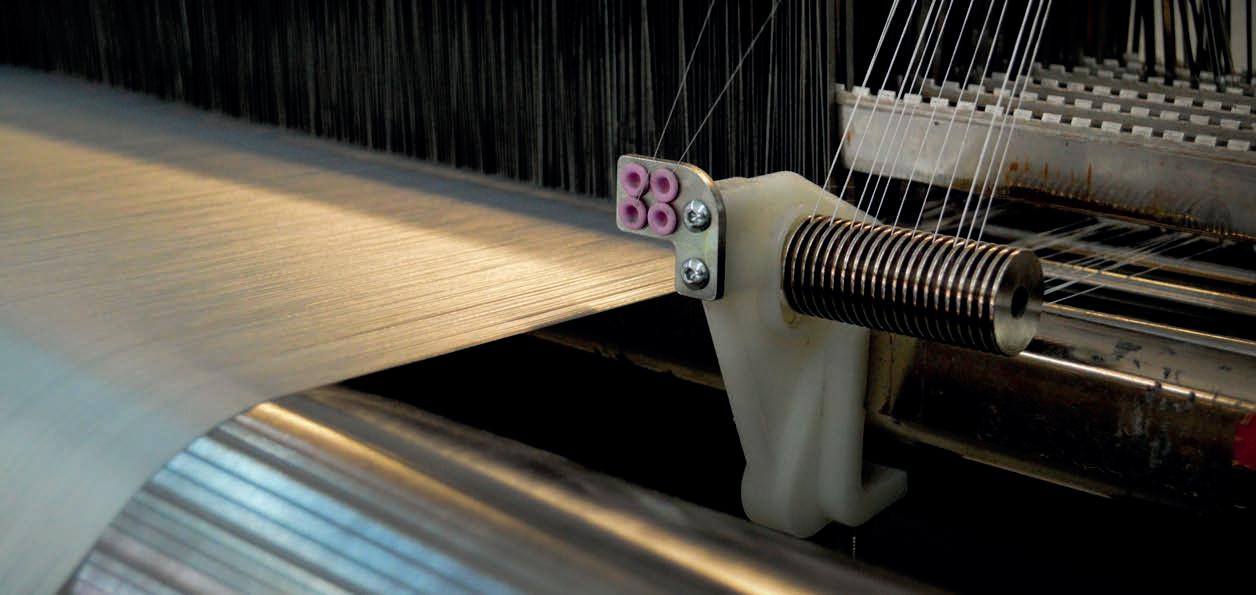
“An investment and a plan that will bear fruit in the medium to long term, but as soon as the trainees are ready- Borelli explains- they will be able to work at one of the other three weaving mills or choose the path they prefer within the district, because this choice of mine is not limited to my companies, but it extends to include all Prato’s allied activities, in which I continue to invest”.
“Se la montagna non viene a Maometto, Maometto va alla montagna” recita un celebre aforisma, che in questo caso ben si adatta alla scelta di Andrea Borelli, titolare di Tessitura Italia, che con l'inizio in estate è diventata un'unica entità con Filo d'Oro e Italia 2.0, concludendo il percorso iniziato alcuni anni fa.
Forte dell'ingresso nell'orbita industriale, mantenendo orgogliosamente il “titolo” di artigiano, dopo gli anni passati in quella artigianale, la svolta di fondere tutte le società in un unico soggetto “Tessitura Italia”, con un doppio scopo: dare un impronta più solida dell’azienda e maggiori stimoli a tutti i dipendenti, che col passaggio dall’artigianato all’industria guadagneranno in termini
da mettere in ponte di un’ulteriore divisione che prenderà il nome “ I campioni dell’Italia”, una piccola tessitura con al massimo dieci telai e pochi dipendenti che sfornerà tessuti per ordini dei clienti non così corti da essere considerati campioni né così lunghi da essere considerati alta produzione.
Sarà non solo una piccola tessitura per ordini dalle metrature contenute ma anche una vera e propria scuola formativa per chi vuol entrare nel mondo del lavoro tessile. I campioni dell’Italia infatti non avrà la pressione della quantità di tessuto da produrre e neppure il problema delle tempistiche ristrette, così potrà dar spazio, via via, a persone che vogliano imparare i mestieri da tessitura, un ulteriore investimento e scommessa sulle persone e non sui macchinari.
Il tutto in un nuovo e ulteriore spazio a Montemurlo che sarà pronto
“vivaio” della Tessitura Italia.
“Un investimento ed un progetto che porterà i suoi frutti nel medio e lungo periodo ma quando saranno pronti – spiega Borelli– potranno entrare a lavorare nelle altre tre tessiture o scegliere la strada che preferiscono nel distretto, perché questa mia scelta non è limitata alle mie aziende ma a tutto l'indotto pratese, sul quale continua a investire”.
50 La Spola
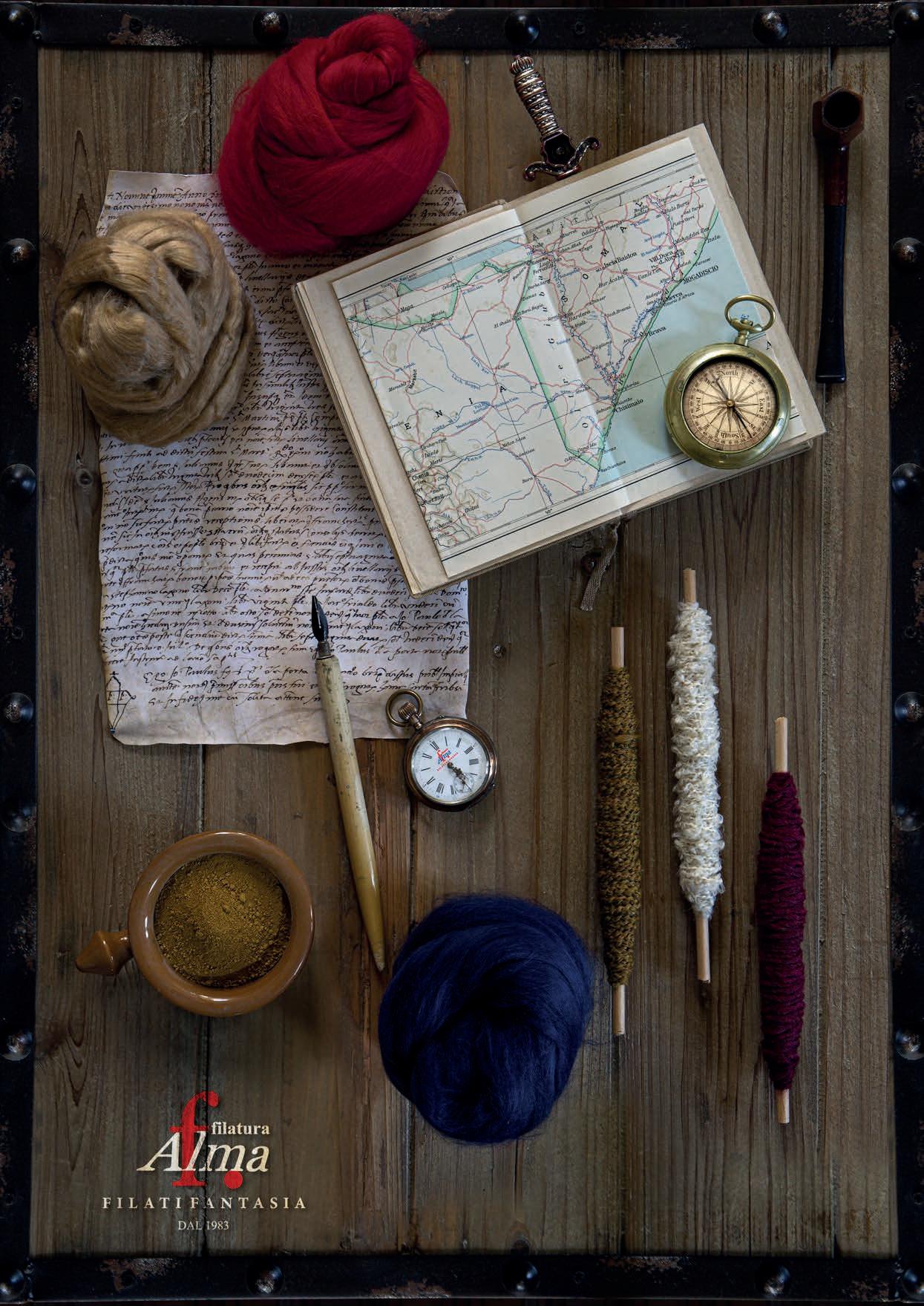
I nostri Servizi
Stock Service
È in grado di offrire una serie infinita di filati naturali o sintetici
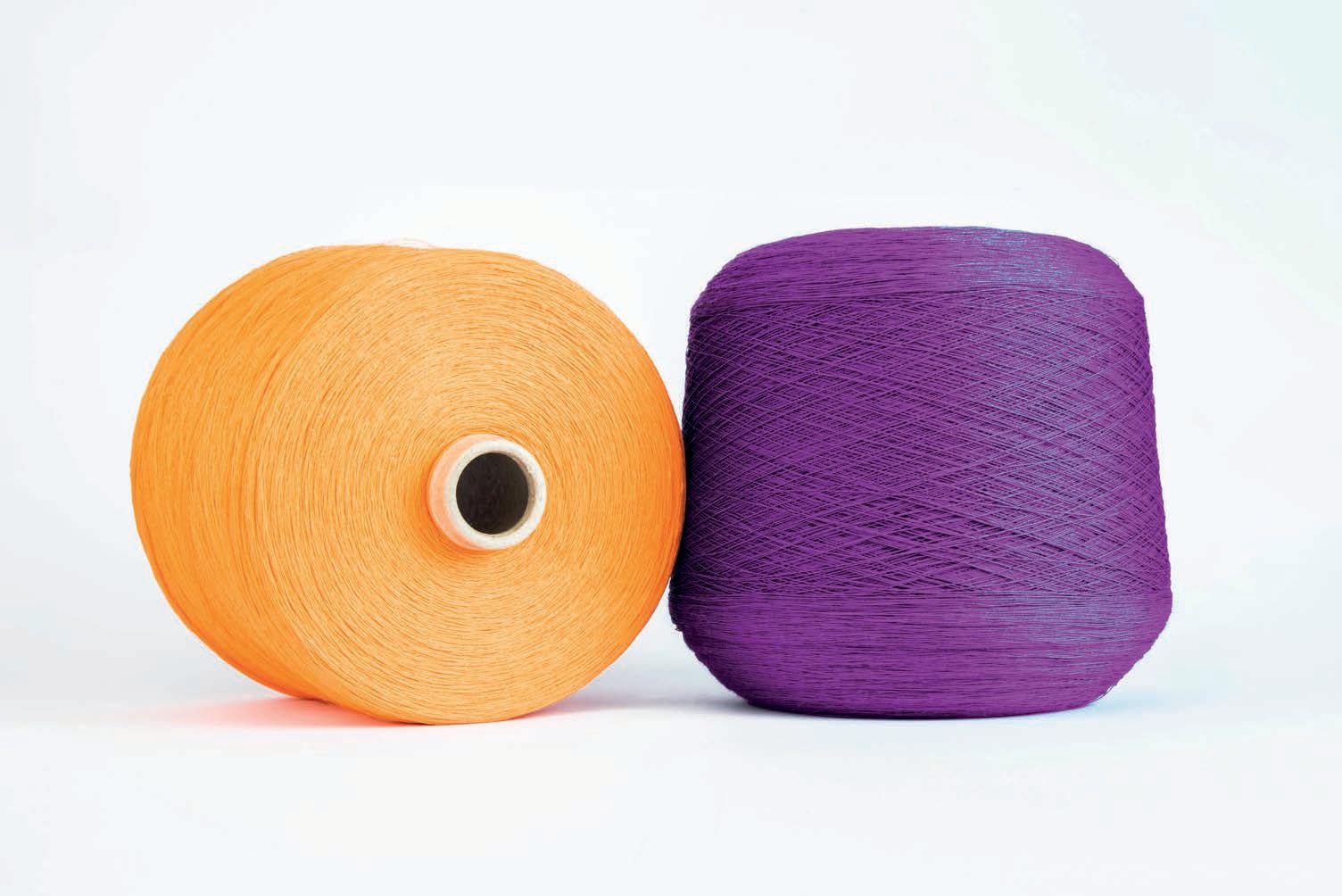

Consegna in 12/24h
Di tutti gli articoli presenti sul nostro catologo on-line
Spedizioni rapide in Europa
Garantiamo la spedizione veloce in tutta Europa
t.o.t. s.r.l. - tessimenti e orditi tinti stock service 22070 CASNATE CON BERNATE (CO) VIA TICINO, 1/B - TEL. 031 473 021 - FAX 031 6125683 E-Mail: info@totsrl.it www.totsrl.it
A positive show
A positive edition of ITMA was held in Milan for Itema, which had one of the busiest stands during the seven-day show to admire, even in operation, the latest products created by the company. This was confirmed by Ugo Ghilardi, CEO of Itema Group.

What was the response you got from ITMA?
If ITMA confirms itself as the most important trade fair worldwide for the textile machinery sector, Milan has demonstrated its great attraction as a host city. As Itema we are very satisfied both with the number of visitors and with the quality of the same. We welcomed qualified contacts from more than a thousand companies from all over the world to our stand, with a prevalence of visitors from Turkiye, India, Italy and Europe in general, and Latin America.
Any products that attracted special attention from the people?
Itema presented at ITMA the new EVO weaving machines range, made up of rapier and air-jet looms characterized by superior performance in terms of textile mastery, eco-efficiency, digitalization, easy weaving. The response from the public was remarkable, and particularly appreciated by the weavers was the new range of rapier weft transfers, which today allows the successful weaving of the widest range of yarns by combining superior textile quality with maximum machine performance. Still in the field of rapier weaving machines, the new range of iSAVER® has had great success. The mechatronic device that eliminates the false selvedge on the left side of the fabric which has conquered denim weavers since 2018, was presented at ITMA up to 6 weft colors and for a wider variety of applications, including wool, cashmere, and technical fabrics.
On the air-jet weft insertion front, the new iKNOW software, which consists of a library of textile articles and weaves available to the weaver to facilitate and optimize textile adjustments during the new article phase, has aroused interest and appreciation. Another highlight of the Itema booth was the corner dedicated to after-sales services, such as original spare parts, where demos of the new Customer Portal HelloItema took place on daily basis. An absolute novelty for the sector, HelloItema works like the reserved areas of the most well-known consumer e-commerce and allows Itema customers to manage the fleet of Itema machines and previous brands in real time and to have real-time communication with the company.
Edizione positiva di ITMA quella che si è tenuta a Milano per Itema, che ha in funzione, gli ultimi prodotti creati dall'azienda. Lo conferma Ugo Ghilardi, CEO di Itema Group.
Qual è stata la risposta che avete ottenuto da ITMA?
tessili a livello mondiale, Milano ha dimostrato la sua grande attrattiva come città ospitante. Come Itema siamo molto soddisfatti sia del numero di visitatori che della qualità degli stessi. Abbiamo accolto presso il nostro stand contatti visitatori da Turchia, India, Italia e Europa in generale e America Latina. Ci sono stati dei prodotti che hanno richiamato una particolare attenzione del pubblico?
Itema ha presentato ad ITMA la nuova gamma di macchine per la tessitura EVO, composta da telai a pinza e ad aria caratterizzati da prestazioni su-ciency), digitalizzazione (digitalization), tessitura facilitata (easy weaving). La risposta del pubblico è stata notevole, e particolarmente apprezzata dai tessitori è stata la nuova gamma di trasferimenti trama a pinza che oggi conqualità tessile alle massime prestazioni della macchina. Sempre in ambito di macchine per tessere a pinza, grande successo ha riscosso la nuova gamma di iSAVER®, il dispositivo meccatronico che elimina la falsa cimossa sul lato sinistro del tessuto che dal 2018 ha conquistato i tessitori di denim è stato applicazioni, tra cui tessuti in lana, cashmere e tessuti tecnici. Sul fronte telai ad aria, il nuovo software iKNOW, che consiste in una libreria di articoli e armature tessili a disposizione del tessitore per facilitare e ottimizzare le regolazioni tessile in fase di nuovo articolo, ha riscosso interesse e apprezzamento. Altro highlight del booth di Itema è stato il corner dedicato ai servizi di post-vendita, come ricambistica originale e service, dove si sono svolte le demo del nuovo Customer Porta HelloItema. Novità assoluta per il settore, HelloItema funziona come le aree riservate dei più noti e-commerce consumer e di marchi precedenti e di avere una comunicazione in tempo reale con l’azienda.
FOCUS 53 La Spola
ITEMA TRACCIA UN BILANCIO POSITIVO DI ITMA 2023
Fancy yarns since 1983

FILATURA ALMA, FILATI FANTASIA DAL 1983
maglieria e arredamento con un'ampia gamma di articoli invernali ed estivi. Si rinnova in ogni stagione per rispondere alle richieste sempre più esigenti del mercato e per rispettare le tendenze del made in Italy.
I punti di forza della nostra azienda sono dati dalla continua internazionale.
Abbiamo adottato soluzioni su misura per ogni cliente. I nostri macchinari all'avanguardia e la nostra capacità ci permettono di e fantasia.
inoltre orgogliosi di collaborare con i membri dell'organizzazione
54 La Spola
The fruit of innovation

Fibre Blending Plants

Sixty years of experience, business and technology have allowed us to make innovative machinery and systems, working closely together with the textile and other industries.

Our goal is to respond to the demands of new products (especially nonwoven fabric) with focused and innovative projects and using high technology.

VIA PROVINCIALE PRATESE, 11 51037 MONTALE (PT) ITALY TEL. +39 0574 718222 FAX +39 0574 710006 info@officinegorgeri.it www.officinegorgeri.it
silk different

An added value
GRUPPO COLLE PRONTO A INAUGURARE UN NUOVO LABORATORIO
In the supply chain of raw material production and harvesting in both limits arrive for the achievement of further environmentally 'friendly developments, the current trend seems to be the elimination of certain steps that will certainly contribute to an improvement in impacts at that stage but will impact subsequent processing. Less water used, less gas and less electricity: an exercise in virtue that is certainly appreciable but that also creates, as already mentioned, problems for those who, in the context of an extended supply
arriving at the standards of quality and sustainability demanded by brands is further away and therefore more and more checks and controls must increase. It is also for this reason that Gruppo Colle has decided to equip itself with an analysis laboratory, spinning

new space but still within the Colle plant: it will be an additional service for all clients. An added value that does not compete with the laboratories already existing in the district but becomes a tangible
will be ready with precise answers in a short time. The laboratory is nearing completion, will be inaugurated soon, and will employ
of the beginnings to the current three employees.
57 La Spola
--
Tradition and innovation
RIFINIZIONE VIGNALI: TRADIZIONE E INNOVAZIONE
For many years, Rifinizione Vignali has been a name associated with quality and innovation in the field of textile finishing, because of the wide range of state-of-the-art treatments it offers. Quality service has been the company’s strength for 72 years, along with the Vignali family’s uninterrupted ownership of the company. Rifinizione Vignali, in fact, began operating back in 1947, when Silvio Vignali took his first steps as entrepreneur by teaselling blankets. The years 1954-55, with Silvio’s son Ivo joining the company, marked a great turning point in the business. Rifinizione Vignali changed and expanded its production range and processing methods with a view to further industrial development. Ivo is the current president of the board of directors and the thirdgeneration members of the family, Barbara and Silvia, have joined the company too.
Over the years, in addition to new finishing treatments of fine and innovative fabrics, in par-ticular, upholstery fabrics which had not been produced in the Prato area until then, the company became highly specialized in the finishing of acrylic carpets and faux fur coats. In more recent times, Rifinizione Vignali also specialized in the finishing of velvets and fur-nishing fabrics, for which it has become a benchmark for manufacturers of this type of fabric In the sixties, the company believed it was time to upgrade the entire machinery fleet and, in 1973, a new dyeing mill, Ma-Vi, was started, adding to the one operating within Rifinizione Vignali. Then the company further expanded its activity, soon becoming well-known not only in the Prato area, but also across the country and abroad. Today, the company can count on a base of regular customers who continue to trust Vignali’s experience and rely on its inno-vative solutions. At present, Rifinizione Vignali, together with Tintoria MA-VI, employs about 100 people and is increasingly committed to research on new technologies and improvement of processing and service quality, Vignali in fact has for many years now been using, in production, only water from the water purifier specially treated and made suitable for all production processes.
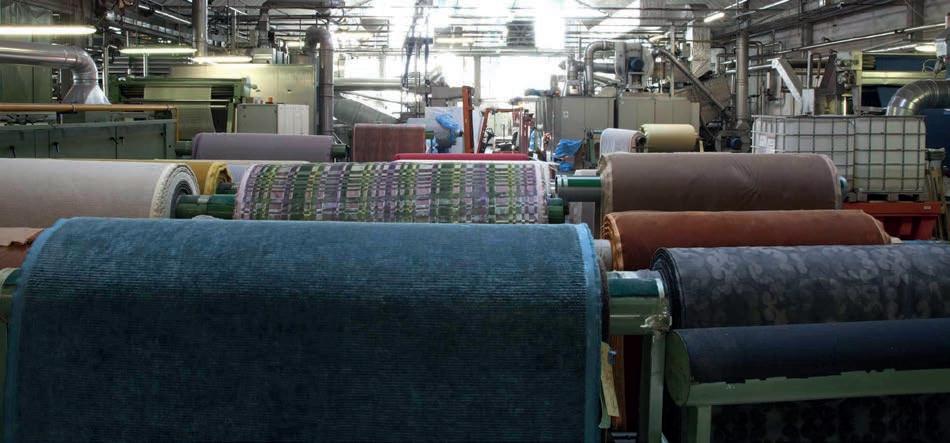
FOCUS 58 La Spola
----




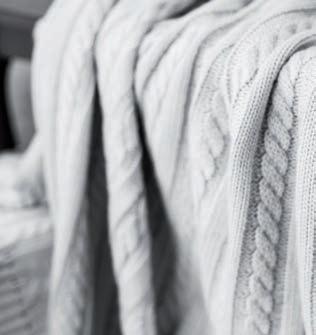





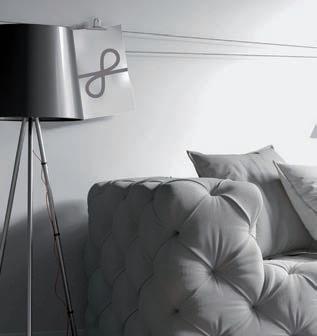



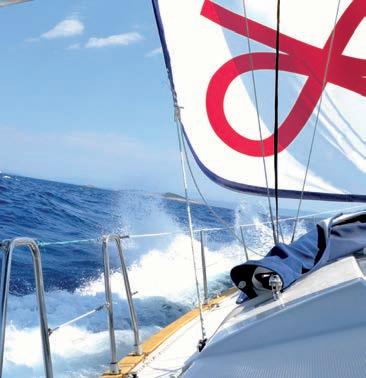

produttori autorizzati Filmar Spa e Cotoni cio Olcese Ferrari Spa loscozia.it loscozia attitude # loscoziatheoriginal the original
Via Martiri di Cefalonia, 6 | 20054 - Segrate (MI) Tel (+39) 02-216621 | Fax (+39) 02-2139410 info@shimaseiki.eu
Sustainability and flexibility
I NUOVI TRAGUARDI DI EPSON COMO PRINTING TECHNOLOGIES
ITMA 2023 was an opportunity for Epson to present the latest innovations in the Monna Lisa series, designed to improve environmental
reduced resource use and a major reduction in processing time.
cutting-edge solutions for an industry that needs continuous innovation
Lisa project in 2003, it started a real revolution. Today this district covers more than 70 percent of printing with digital technology, often
committed to renewing and expanding its range of textile printing needs of an increasingly demanding and competitive market seeking experimentation with new approaches, from process reduction to the
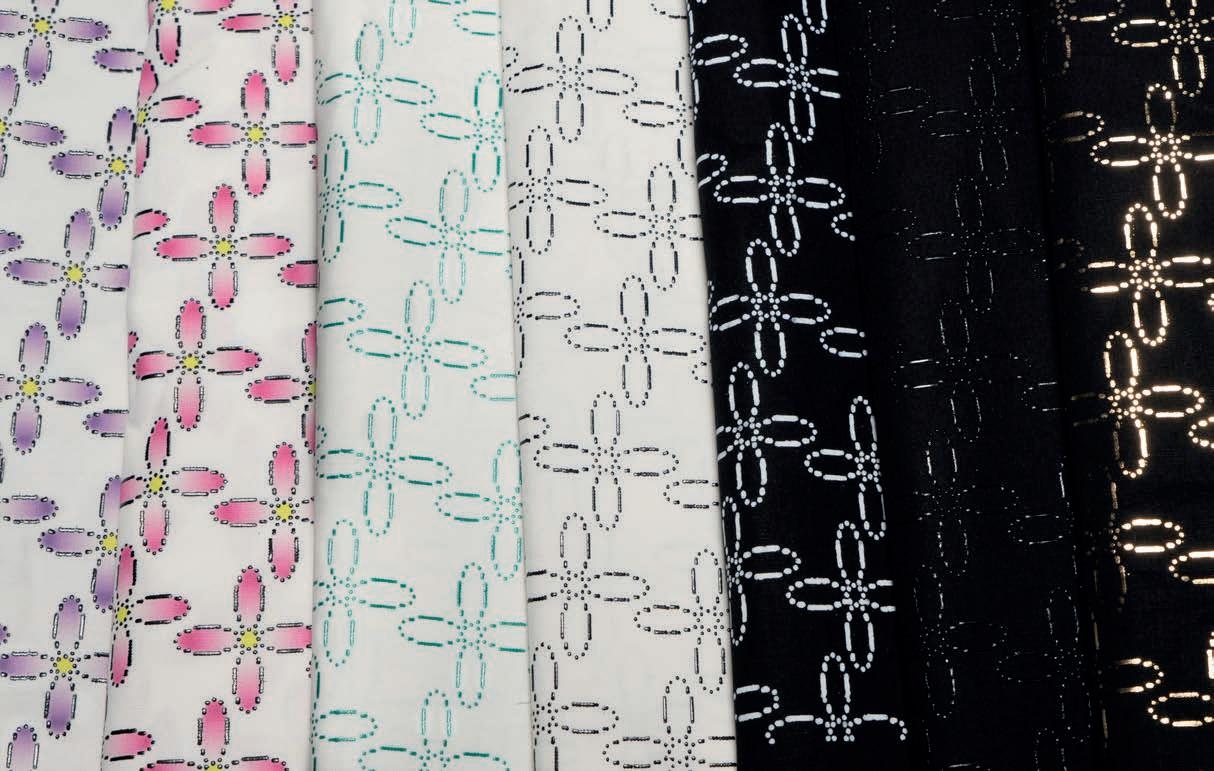
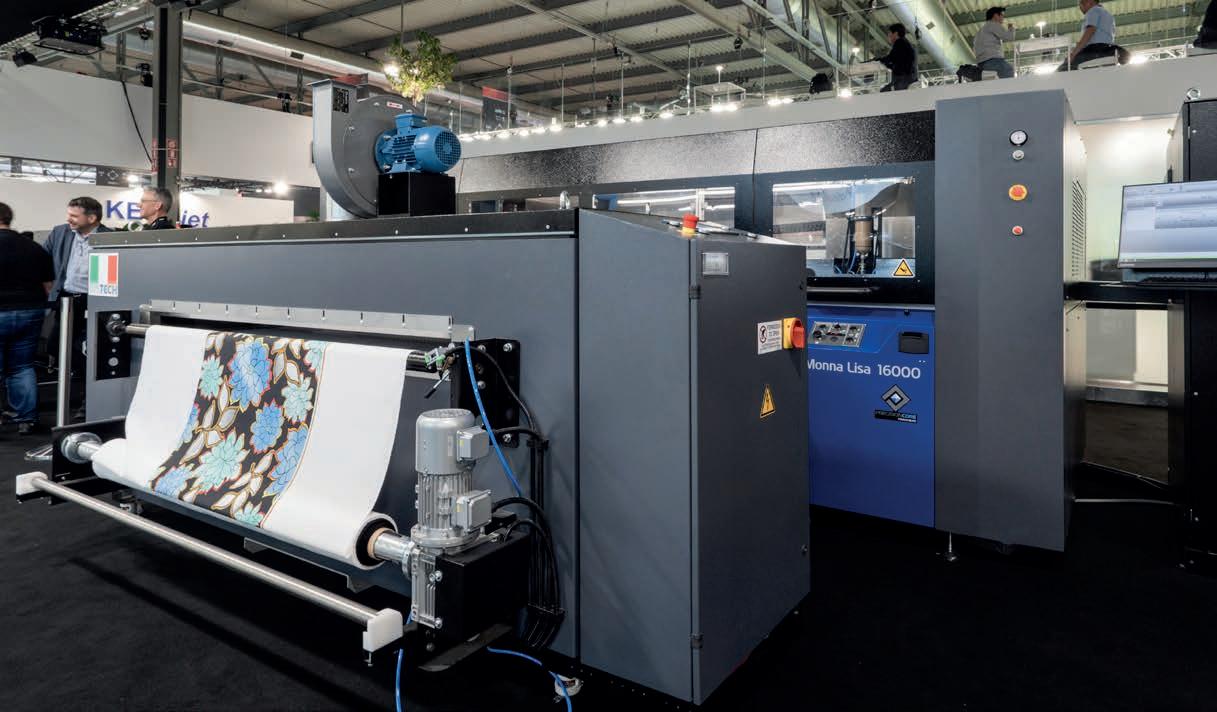

ITMA 2023 è stata per Epson l’occasione per presentare le ultime innovazioni della serie Monna Lisa, pensate per migliorare l’impatto una reale transizione verso processi produttivi tessili sempre più sostenibili, con un ridotto impiego di risorse e un’importante riduzione dei tempi di lavorazione. La rivoluzionaria stampante ibrida Monna Lisa ML-16000/ di tessuto senza alcun passaggio successivo: dalla lacca lucida, al metallo colori, progettata per raggiungere su qualsiasi tipo di tessuto gli standard digitale, a conferma del costante impegno dell'azienda nel fornire soluzioni
Oggi questo distretto copre oltre il 70% di stampa con la tecnologia digitale, tessili nel mondo. Da più di 20 anni, dunque, Epson è impegnata nel rinnovare e ampliare la propria gamma di soluzioni per la stampa tessile e sempre più esigente e competitivo e in cerca di sperimentazione di nuovi
61 La Spola
Monna Lisa ML-16000/HY
On the customer’s side
LA LUNGA TRADIZIONE DI OFFICINE GORGERI
2023 anno da segnare sul calendario per Officine Gorgeri, che celebra i 70 anni dell’azienda, fondata nel 1953 da Aldo Gorgeri e da allora sempre presente e attiva sul mercato delle macchine per il cardato prima e della progettazione e della costruzione di macchine e impianti per l'apertura e la miscelazione delle fibre poi.
Quasi tre quarti di secolo di successi sui mercati nazionale e internazionale grazie alla tecnologia affidabile e alla capacità di trovare una soluzione anche a problemi molto difficili, seguendo richieste ed indicazioni dei clienti. Nel 1994 Aldo Gorgeri, affiancato dai figli, ha trasformato la ditta in Officine Gorgeri srl con una maggiore vocazione all’internazionalizzazione, con tecnologie affidabili che hanno aiutato a fidelizzare i clienti.
Gli apriballe per l'apertura fine delle fibre possono aprire tutti i tipi di fibre, da quelle sintetiche a quelle naturali; la gamma comprende una macchina per l'apertura iniziale per tutti i tipi di fibre e un apriballe per la cardatura di una fibra bicomponente.
Negli ultimi anni, l'azienda ha intensificato gli investimenti nella progettazione e nel continuo ammodernamento delle macchine utensili, in modo da poter offrire prodotti affidabili e duraturi che soddisfino la domanda dei clienti. Il tutto con un’evoluzione costante, anche verso il riciclo delle materie prime e la lavorazione di fibre naturali come il legno, la canapa ed il lino.
L'80% dei clienti delle Officine Gorgeri opera nel settore geotessile e produce tessuti non tessuti leggeri e pesanti applicati per separare, filtrare, rinforzare, proteggere e drenare l'oggetto da trattare.
Ad oggi Officine Gorgeri ha una vasta copertura del mercato internazionale, con clienti sia in Europa, compreso l’Est (Repubblica Ceca, Lituania, Slovenia e Polonia), che fuori dal continente ( Turchia, U.S.A., Canada, Sud America e Sud Africa.


62 La Spola
---

Happy hour?
TRA APERITIVO E CENA, DOPO LA FIERA
by La Spola
It’s practically an obligation, a modern-day ritual following the boom at the turn of the century, when going to a bar for a little something before dinner turned into a way of socialising, being trendy, getting together with friends or greeting colleagues.
Aperitifs are almost compulsory nowadays, and even more so in “fashionable” cities like Florence, Milan and Paris. And in fact they often turn into a moderately-priced dinner or an expensive snack, frequently in delightful places and with exquisite food. So let’s find out where we can take refuge after a long day among the stands at the exhibition centre, and find great flavours, fun, music and pleasant company.
In Florence, the choice is entrusted to our Firenze Made in Tuscany Magazine and website, which list the city’s top venues for aperitifs. In a city where the culture of good drinking is a hallowed tradition, there are any number of worthwhile places to relax with a properlymade cocktail. Elegant, sophisticated and exclusive, aperitifs in central Florence are a treat for locals and tourists alike. The perfect way to rediscover the city as summer arrives. The first recommendation among many on the website is the Atrium Bar – Four Seasons Hotel Firenze (Borgo Pinti 99), a meeting place both for guests at the hotel and Florentines. Cult cocktails you have to try include the Vintage Negroni and the Moulin Rouge. Then there’s Locale (Via delle Seggiole 12), in an ancient palace and open every day from aperitif time to late at night. Barman Matteo Di Ienno, who worked in New York and London before coming to Locale, offers creative cocktails and original reinterpretations of classic drinks. The Lodge Club (Viale Giuseppe Poggi 1) has terraces overlooking the historic centre, so you can enjoy an outdoor aperitif with live music from June to September. There are fabulous views at SE.STO on Arno
- The Westin Excelsior Florence (Piazza Ognissanti 3): the sixth floor of the hotel is a terrace with 360-degree views of the Florence rooftops, for an unforgettable evening. Other guaranteed hits are
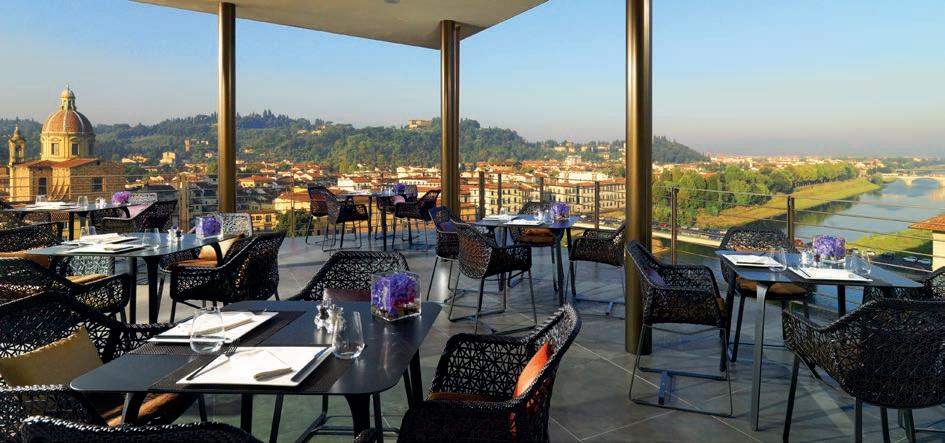
CITIES 64 La Spola
-A Firenze L’Atrium Bar – Four Seasons Hotel FirenzeLocale The Lodge Club SE.STO on ArnoThe Westin Excelsior Florence Harry's
Harry's Bar The Garden (Via Il Prato 40r), in Sina Villa Medici, Cibrèo Ristorante - Helvetia & Bristol Firenze – Starhotels Collezione (Via de' Vecchietti 5), with a cocktail bar whose yellow Siena marble counter dominates the main dining room; and Procacci (Via de’ Tornabuoni 64r), with its celebrated truffle panini. In Milan, the term “aperitivo” opens a world of its own. Although officially the aperitif was invented in Turin with the launch of Vermouth in the late 18th century, there’s no doubt that in Milan it has become a tradition, an essential part of the day; “Milan in a glass”. So it’s no surprise that the list of venues is practically endless, and it’s largely up to the reader to choose the area and the price (never under 8 euros, usually between 10 and 16) to suit their own tastes and preferences.


The Kilburn (Via Panfilo Castaldi 25) opens at 7 pm for aperitifs, serving cocktails and snacks (mainly platters of cheeses and cured meats) until 1 am. Less heavy on the wallet is the Mag Cafè (Ripa di Porta Ticinese 43) where the view of the Navigli canals is accompanied by creative cocktails, coffees and light meals. For a mixture of bar and wine shop, head to N’ombra de vin (Via San Marco 2), with its cellar in the ancient basement of a church. Among its columns you can enjoy wines, spirits and traditional food. We stay in the Navigli area and drop in at Fonderie Milanesi (Via Giovenale 7): the name tells the story of the place, the decor is reminiscent of a hit British TV series, with exposed brickwork and wooden beams. And the garden behind the main room is an additional attraction in summer. The mood changes in the three branches of La Prosciutteria (Corso Garibaldi 55, Ripa di Porta Ticinese 53 and Via Borsieri, corner of Piazzale Segrino), which feels more like Chianti than Lombardy. For cocktails and, especially, food, abundance reigns, and the quality-quantity-price ratio is excellent. You might have trouble finding a table at busy aperitif times. Finally, the rather unusual Superficiale (Via Sansovino 1) serves aperitifs with exquisite - and slightly

65 La Spola
Bar The Garden
Cibrèo Ristorante - Helvetia & Bristol Firenze – Starhotels Collezione
Procacci
Milano
KilburnMag Cafè
N’ombra de vin
-
Fonderie Milanesi (viaLa Prosciutteria
more expensive - snacks under the red lights of a former cinema. Then there’s Paris, where the concept of aperitifs is a little different, perhaps by habit, perhaps because of working hours and a different pace of life. Parisians - and therefore tourists too - spend longer in bars; it’s a less frenzied scene, more about chatting with friends or colleagues than cocktails with elaborate snacks. During happy hour (a more apt term here than aperitif), brasseries and bars are places for social contact rather than good taste, and all you need is a beer and some peanuts to spend time relaxing and watching the thousands of people as they pass through the Ville Lumière. So you might well see unpretentious brasseries with every pavement table occupied, next door to more sophisticated places waiting for customers willing to spend more. The difference may be background music, like at L'Attirail (9, Rue au Marie) in the Arts et Métiers district, where happy hourwhich ends at 7 pm - is accompanied by Zigana and jazz, all at unbeatable, and certainly not Parisian, prices. La Cordonnerie (142, Rue Saint-Denis, ideal if you’re heading to Première Vision from the Chatelet - Les Halles quarter) also targets a young clientele with low prices: on Thursdays there’s free couscous and pints of beer for under 3 euros. Le Syphax (29, Rue de Châteaudun) is an obligatory stop if you’re in the 9th arondissement at happy hour: the cocktails are €5 and there’s room on the table for tapas and platters. The timings are more Milanese at My Baar (152 Boulevard du Montparnasse), in the shadow of the tower (not THE tower), where afternoon tea morphs into aperitifs: in fact, any time between 3 and 10 pm is good for a chat with friends over beer, cocktails and tapas.
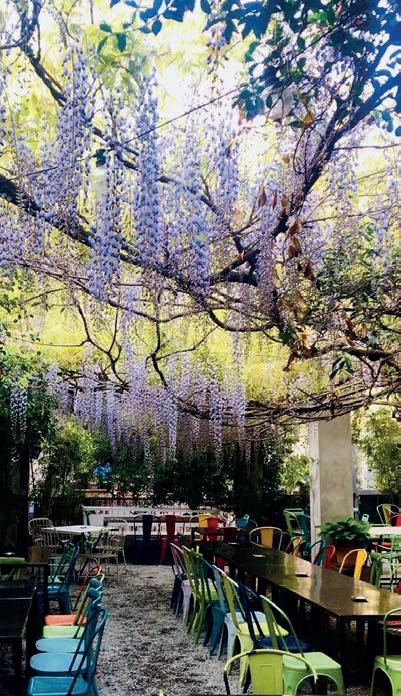

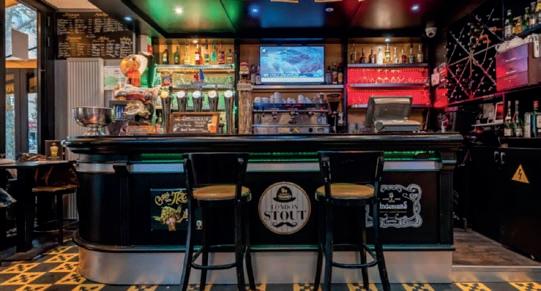
-
(9, rue au La CordonnerieLe Syphax
Baar
Parigi
L'Attirail
My
Parigi ha ritmi più compassati e orari diversi per godersi la compagnia e gustarsi cocktail o stuzzichini
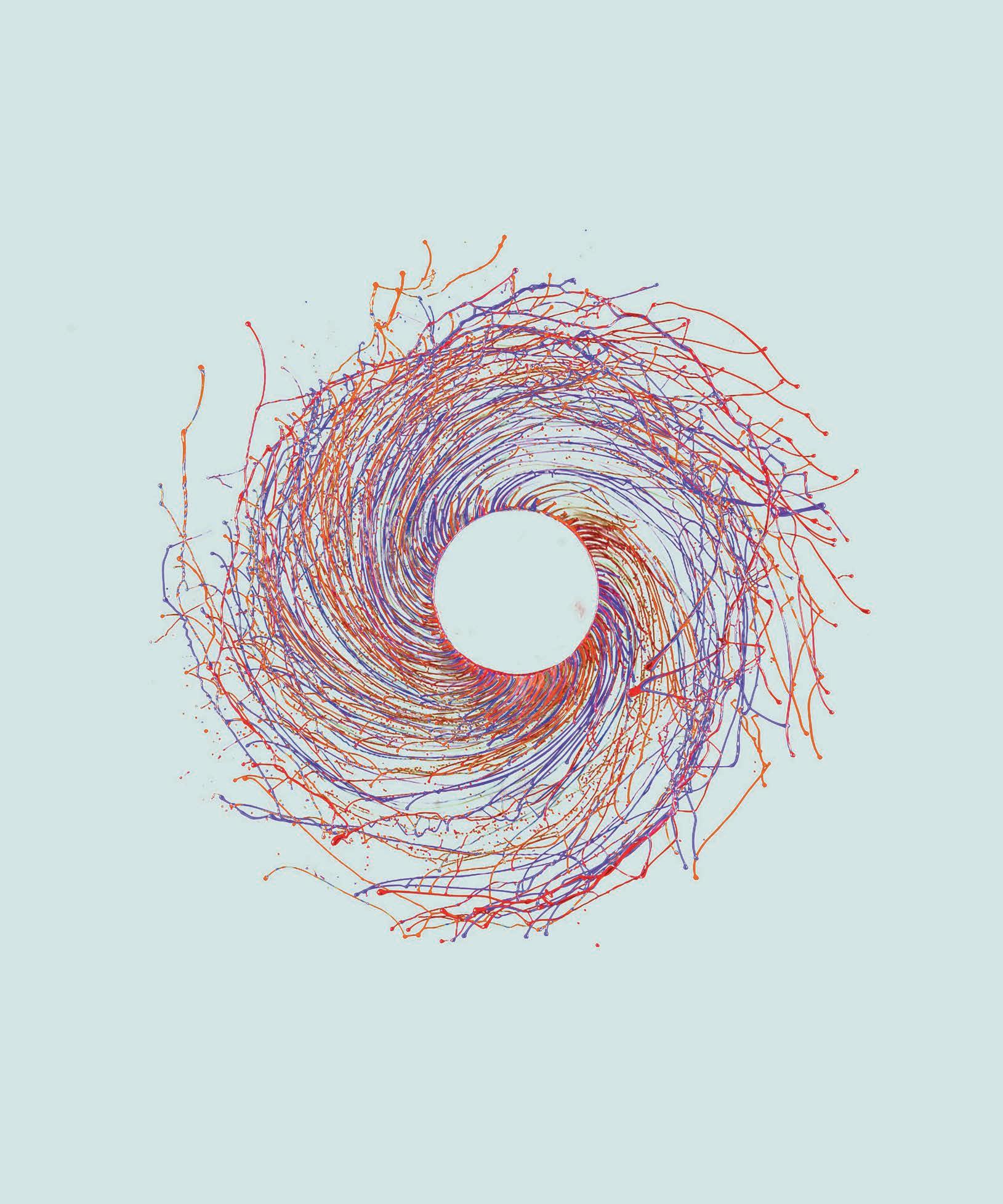





































































































































 by Matteo Grazzini
by Matteo Grazzini













 by Matteo Grazzini
by Matteo Grazzini
 Pitti Filati
Pitti Filati




















































































